There is a remote peninsula in northwestern Russia that has always been the source of great mystery. For decades, scientists have worked on drilling the area towards the center of the planet. At more than 40,000 feet, the borehole has become known as the deepest mankind has ever ventured.
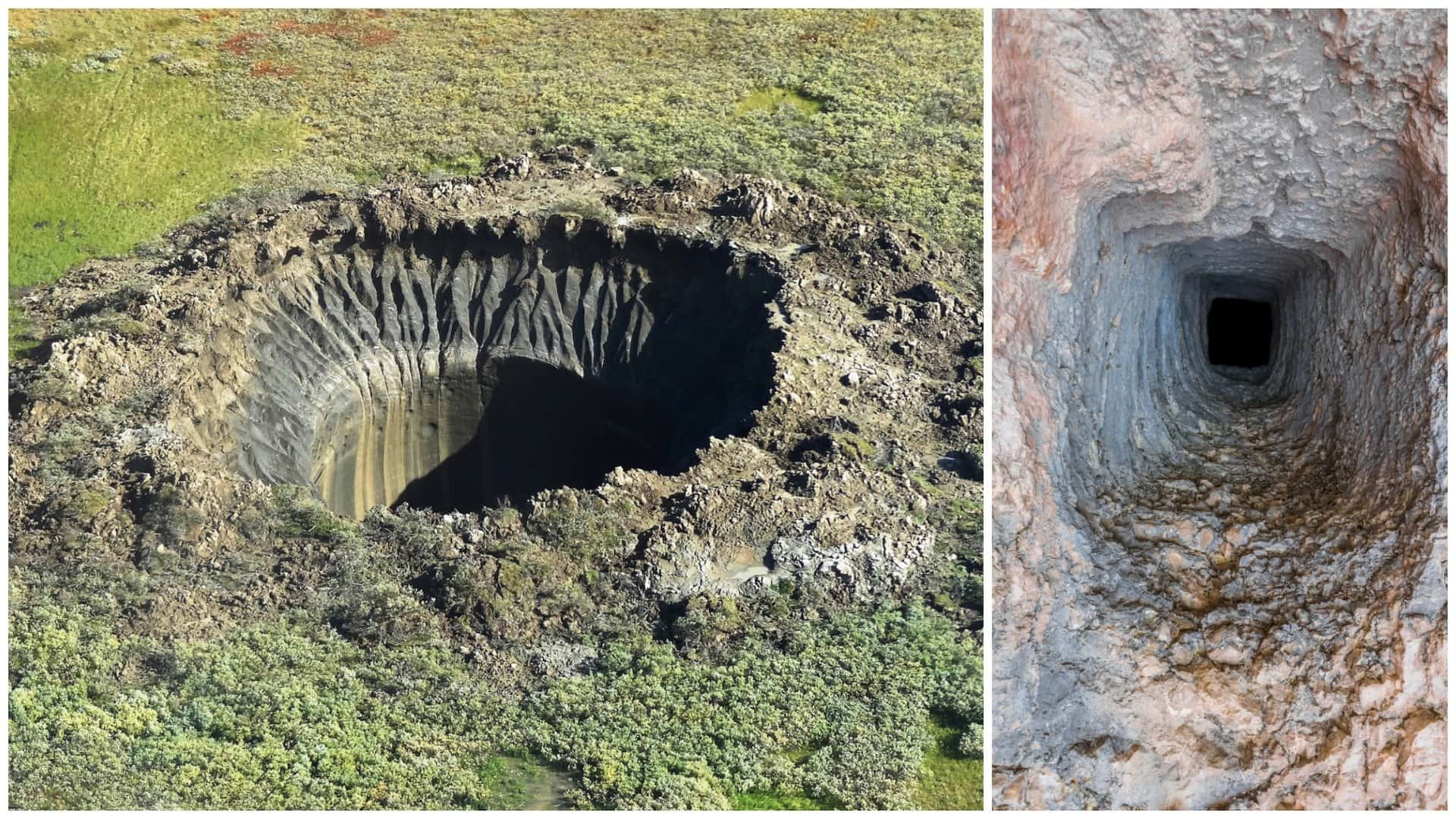
The Real Reason Experts Had To Seal Up The Deepest Hole On The Planet
The Unexpected
And then something unusual happened, and their strategies were thrown off. They seemed to have no option but to permanently close it. What might have put an end to such a ferocious search? The answers to these questions is something you’d never imagine…

The Unexpected
Above And Below
We are not surprised to hear that mankind has a fascination with whatever is lying below the surface. It is easy to see why humans are curious about the unknown. We also have an infatuation with the skies. With the help of private companies and global space agencies, we have since learned more about the universe than we have ever known before.

Above And Below
Interesting Discovery
Although the first artificial satellite was launched in 1957, that was far from the last time we have looked up at the sky. What lies beneath our feet is equally interesting.

Interesting Discovery
The Cold War
Some people even think that we know more about space than we do about what exists below the surface of the earth. We are sure that you have at least heard about the space race that the United States and the Soviet Union entered during the height of the Cold War. However, not a lot of people know about the quest to conquer the subterranean.
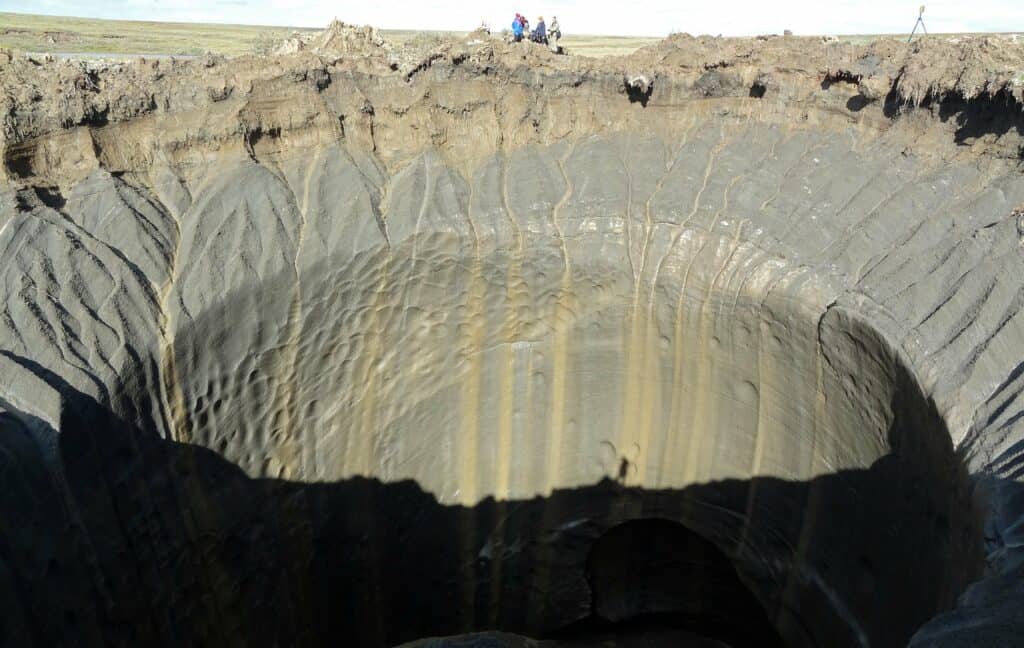
The Cold War
Race To The Depths
Starting in the late ‘50s, American and Soviet scientists started to organize experiments in the name of penetrating the crust. This is the part of the Earth that stretches as far as thirty miles towards the center of the planet.
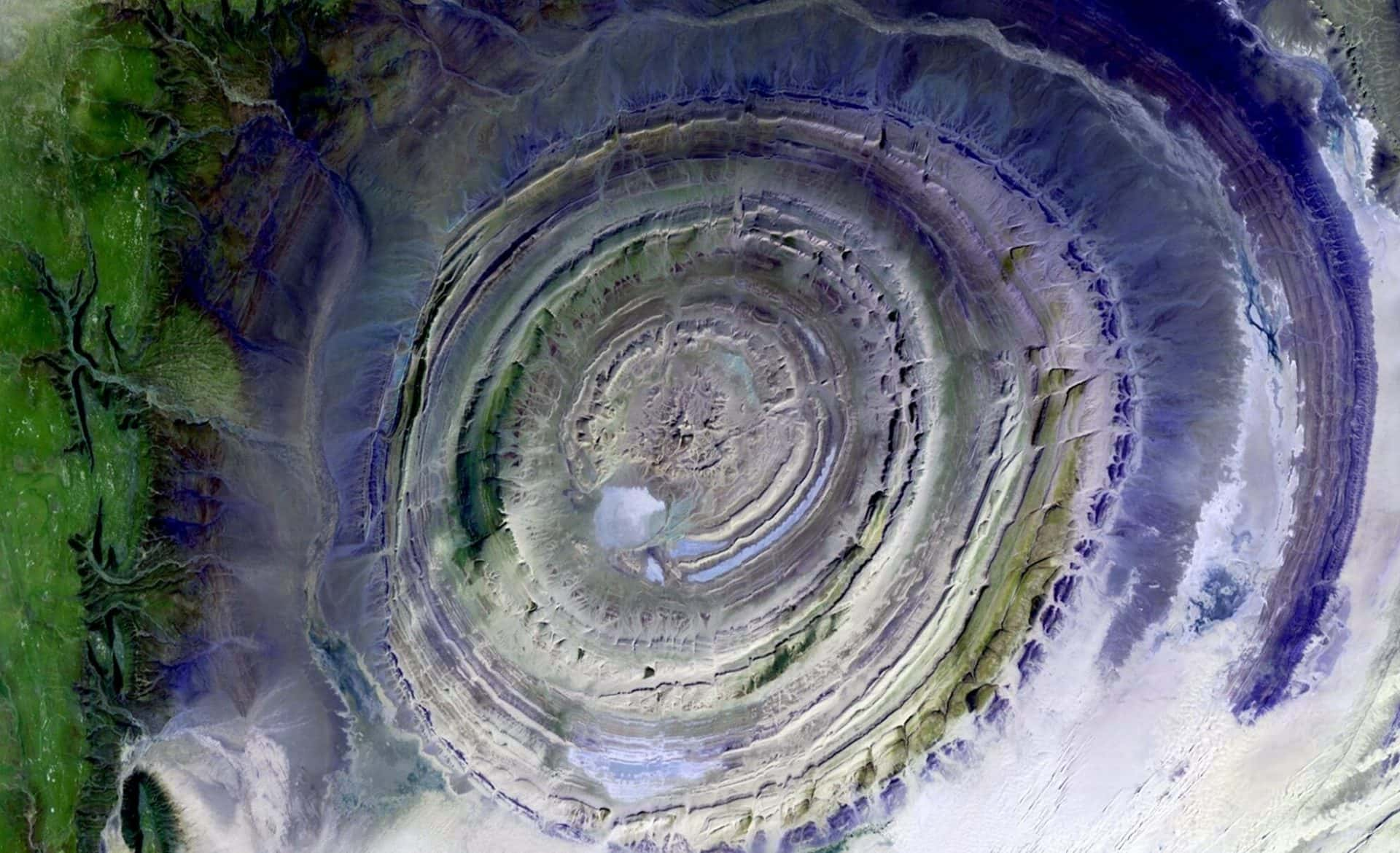
Race To The Depths
The Mantle
The dense shell then gives way to the unexplained inner layer known as the mantle. This deeper layer accounts for nearly 40% of the Earth’s mass. This led to something interesting journey, as far as scientists and researchers are concerned.

The Mantle
Project Mohole
In 1958, the United States took the lead by launching Project Mohole. It is located close to Guadalupe, Mexico. The project involved a team of engineers drilling through the Pacific Ocean bed.
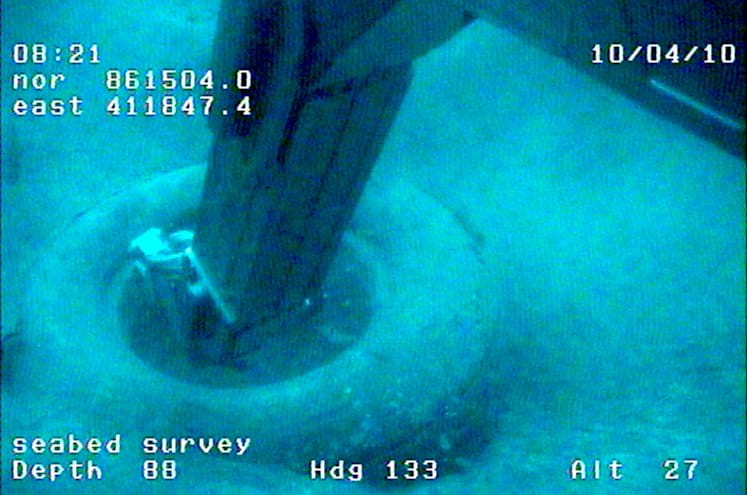
Project Mohole
Reaching The Mantle
They were able to get down to a depth of over 600 feet. Project Mohole, that being said, was ultimately shelved eight years after funding has been cut. The Americans were unable to locate the mantle.

Reaching The Mantle
The Soviets
After that, it was time for the Soviets to give it a shot. A group of researchers started to drill down into the crust below the Pechengsky District. It was a different kind of approach compared to what the initial researchers did.
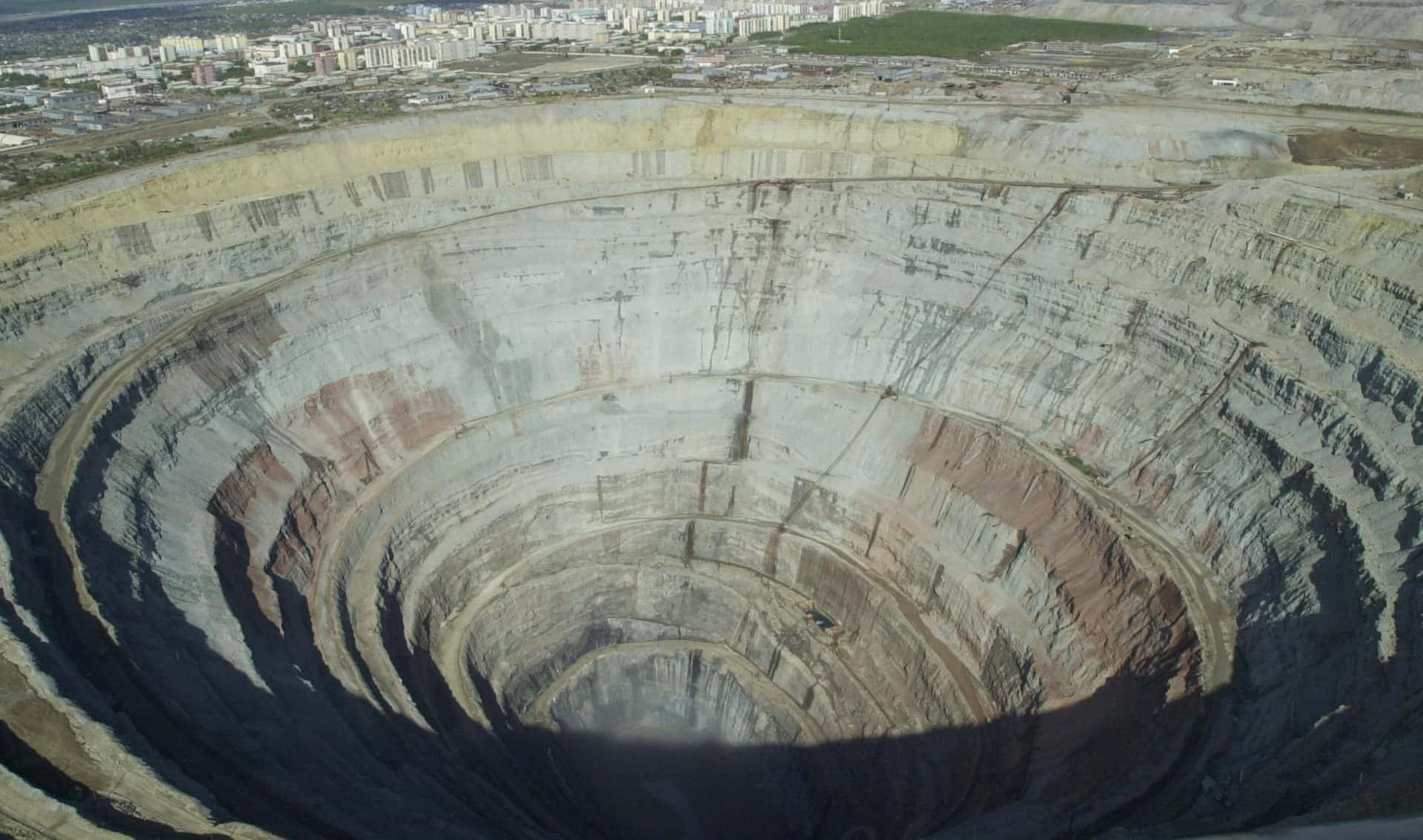
The Soviets
Digging Deep
This is an infrequently populated area on Russia’s Kola Peninsula. The objective was straightforward. They simply wanted to dig as far as they could into the crust.

Digging Deep
What Their Goal Is
The Soviets also wanted to reach as far down as 49,000 feet below the surface of the Earth. With the help of specialist equipment, they started to dig a number of boreholes that forked off from a single cavity. As they worked on this mission, American prospectors made their own progress as well.
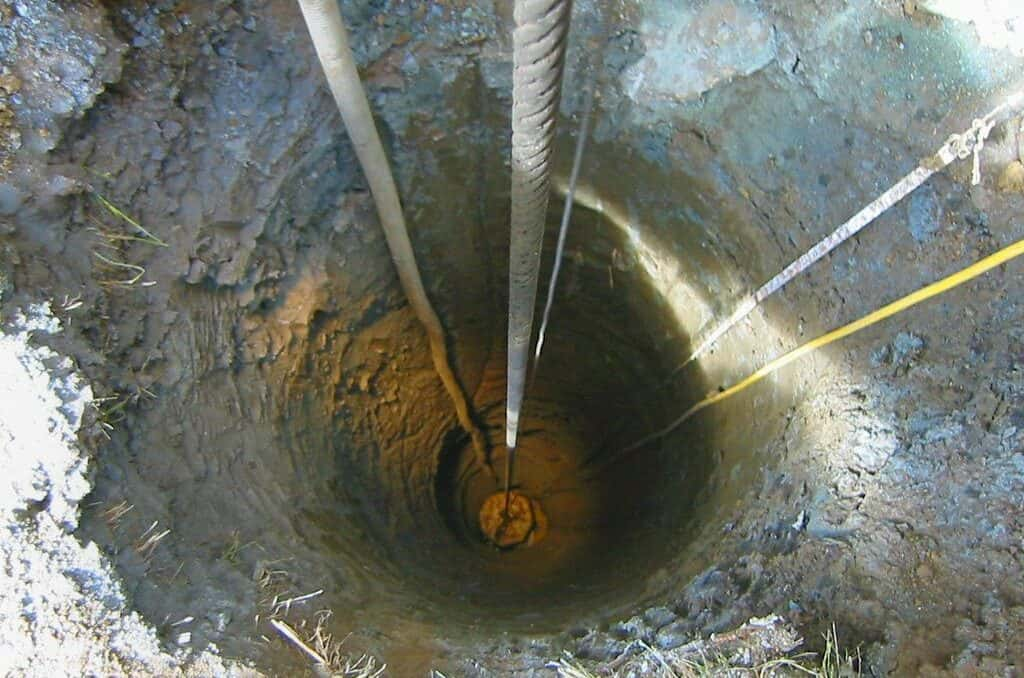
What Their Goal Is
Bertha Rogers Hole
The Lone Star Producing Company had been drilling for oil in western Oklahoma in 1974. As they did so, the firm ended up creating the “Bertha Rogers hole.”
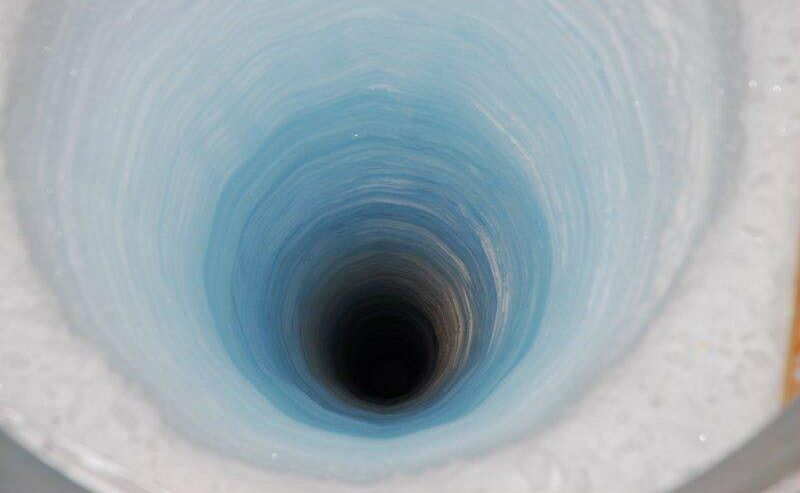
Bertha Rogers Hole
Where Is It Located?
The man-made wonder, which is situated in Washita County, is more than 31,400 feet far below the planet’s surface. That’s nearly six miles! It was quite deep indeed!

Where Is It Located?
Breaking The Record
Even though Lone Star failed to find what it was after, the effort stayed the deepest hole on Earth for five more years. Known as SG-3, one of the Kola boreholes broke that record on June 6, 1979. By 1983, the nine-inches-wide hole was able to penetrate an incredible 39,000 feet into the surface of the planet.
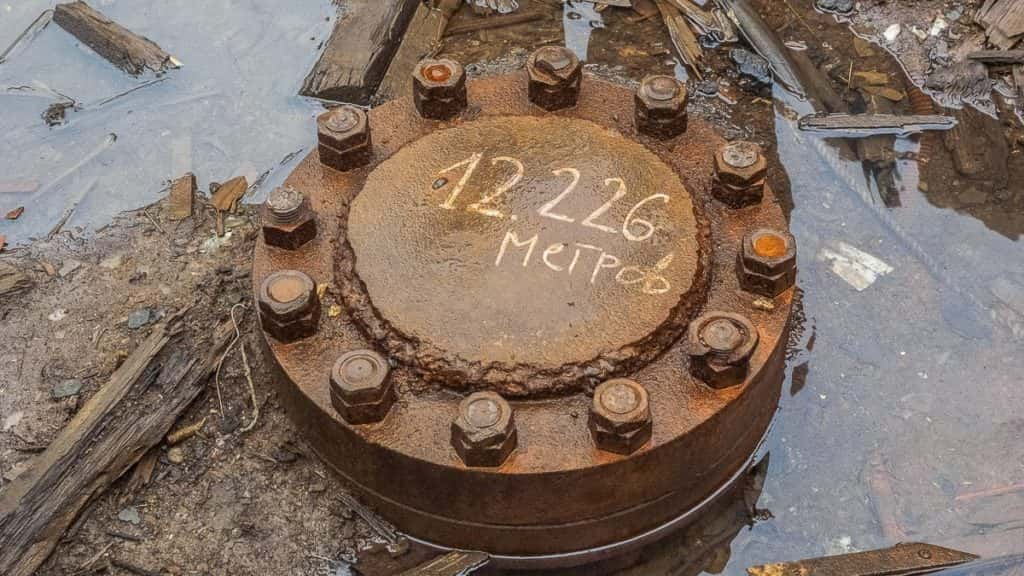
Breaking The Record
After That Milestone
Now that they have reached that milestone, the Kola Peninsula researchers downed tools temporarily. For a year, they took a break from working on it to let various people visit the amazing site.
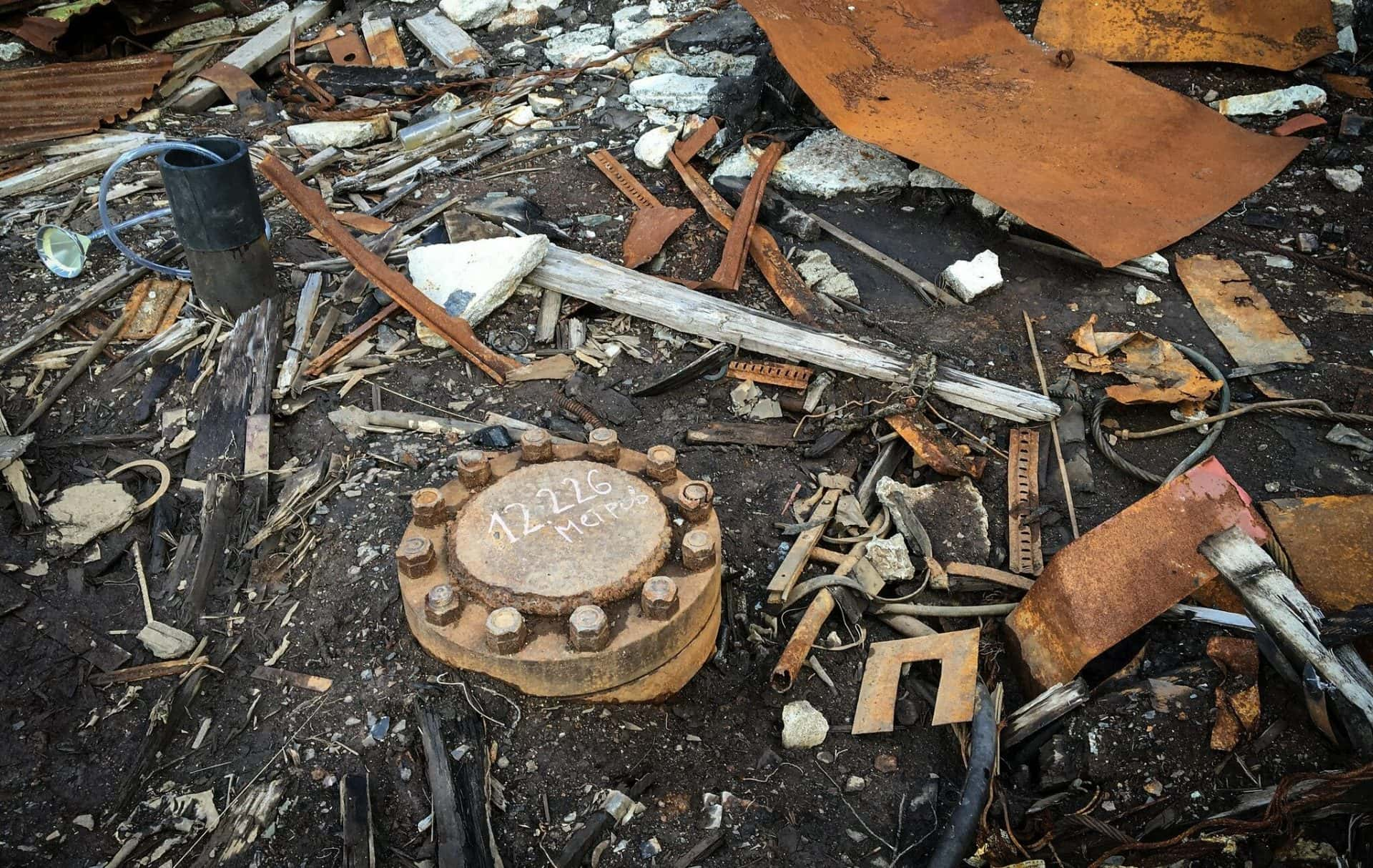
After That Milestone
Technical Problems
However, when they tried to restart after a year, they started to run into a technical problem that compelled them to hold back again. The project was once again set aside. What did the researchers do?

Technical Problems
Not Losing Hope
The researchers did not give up, however. They chose to abandon the first borehole and started all over again. This time, they did so from a depth of 23,000 feet.
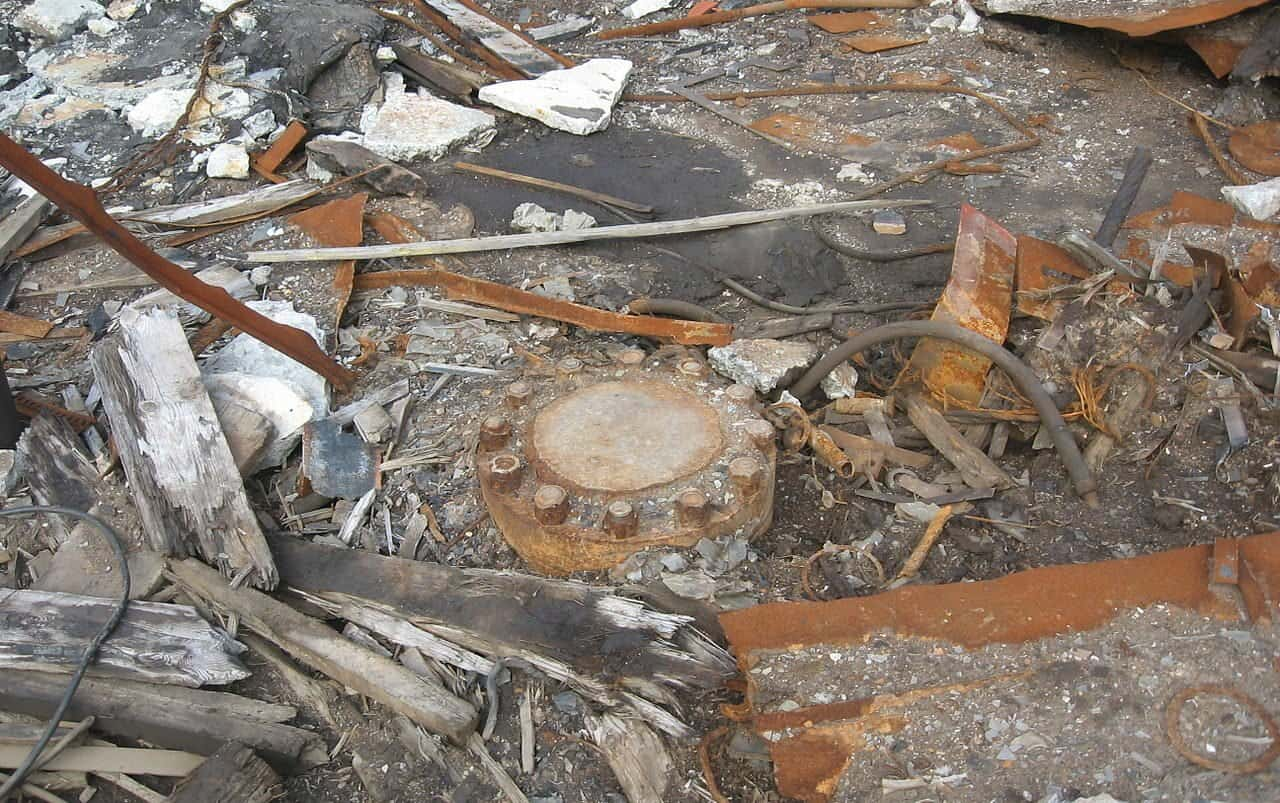
Not Losing Hope
Breaking The Record
By 1989, they had broken the previous record by diving to a depth of 40,230 feet (7.5 miles). This boosted their self-assurance. They should really be able to go well beyond 44,000 feet by the end of 1990 if everything goes well.

Breaking The Record
Something Down There
It was even more impressive when they made the prediction that they would get to 49,000 feet as early as 1993. However, there was something unexpected lurking below the remote tundra.
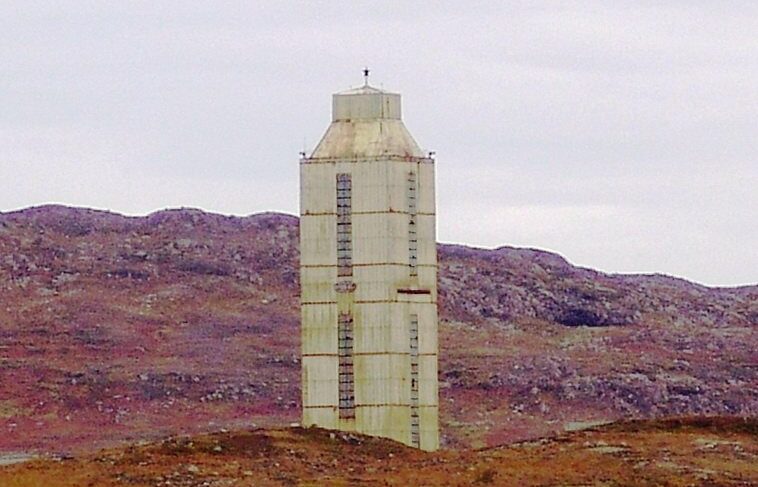
Something Down There
Something’s Wrong
As they came close to the Earth’s core, they ran into something that did make them reconsider their strategy. This was a game-changer for them. It definitely altered their whole plan for the research. What did they run into?

Something’s Wrong
The Unexpected Temperature
Temperatures in the borehole were more or less as the researchers expected. This was true for the first 10,000 feet of the dig. However, things changed after that.
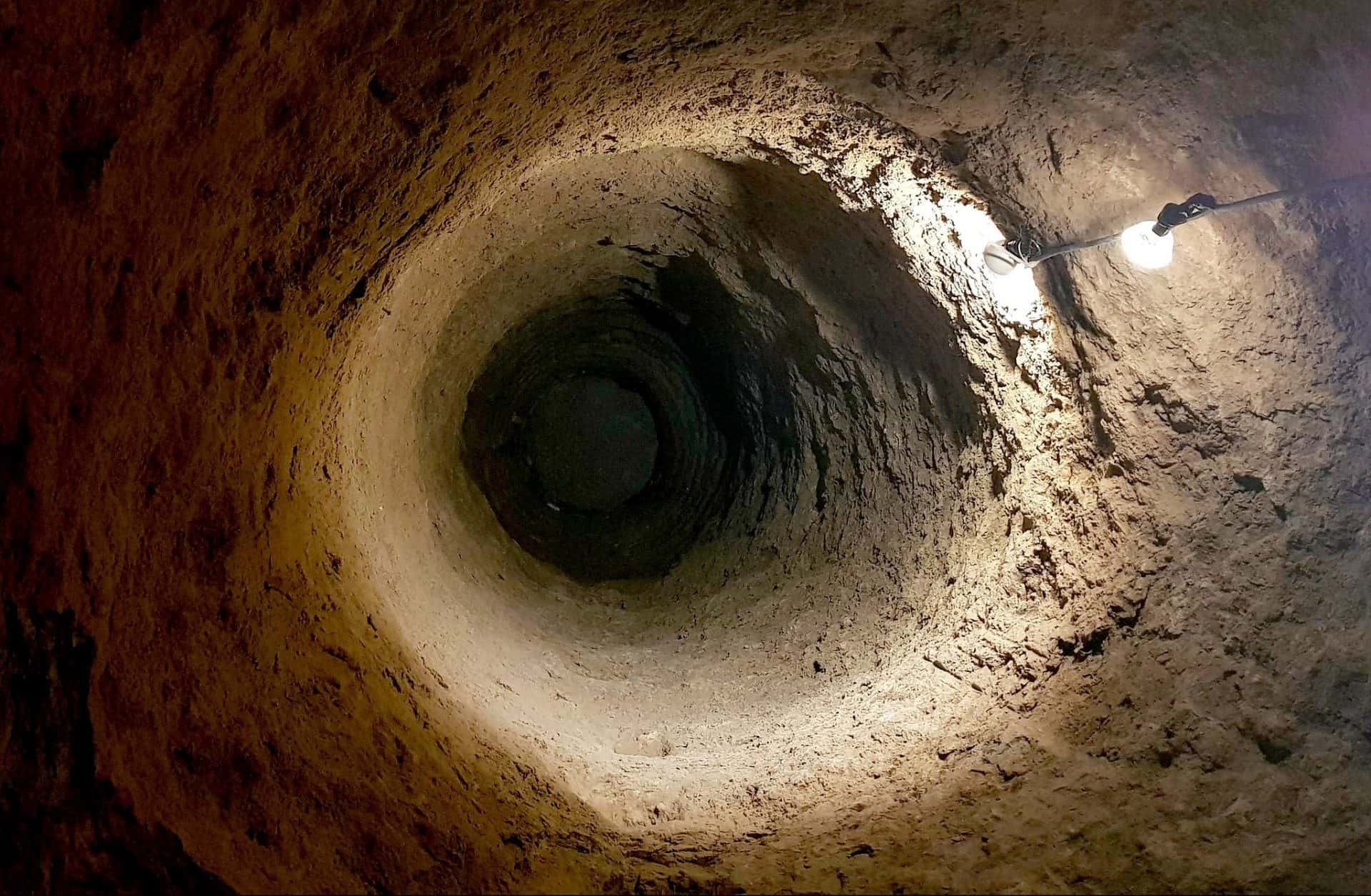
The Unexpected Temperature
The Temperature Changed
The temperature rose much faster than they had anticipated. The temperature in the hole had reached 180 °C (356 °F) by the time they got close to the target. This is a full 80 degrees Celsius (176 degrees Fahrenheit) hotter than they had originally expected!

The Temperature Changed
There Was More
That was not all either. On top of that, the researchers learned that the rock at those depths was a lot less dense than they initially assumed. This caused it to react with the higher temperatures in rather unpredictable ways.
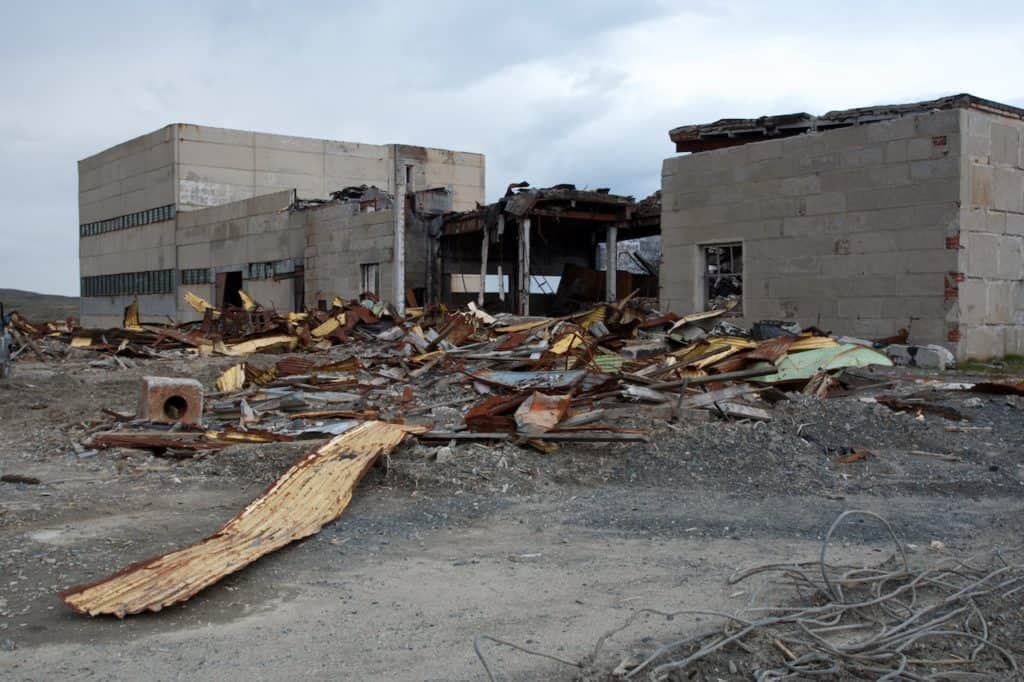
There Was More
Abandoning The Project
They made the decision to cancel the project because they knew the equipment would not last in those conditions. By that time, it had been 22 years since they had begun digging.

Abandoning The Project
The Kola Superdeep Borehole
The researchers learned a couple of fascinating things before they sealed up what has become known as the Kola Superdeep Borehole. For one thing, they found small fossils of marine plants at around four miles deep.

The Kola Superdeep Borehole
What Did They Find?
The relics were in excellent condition, particularly considering how long they had been buried beneath miles of rock. The rock on its own, by the way, was estimated to be over two billion years old!

What Did They Find?
Not What They Expected
They made an even more thrilling discovery at the farthest points of the Kola Superdeep Borehole! As experts measured seismic waves, experts previously assumed that the rock below our feet changes from granite to basalt at two to four miles below the surface of the Earth.
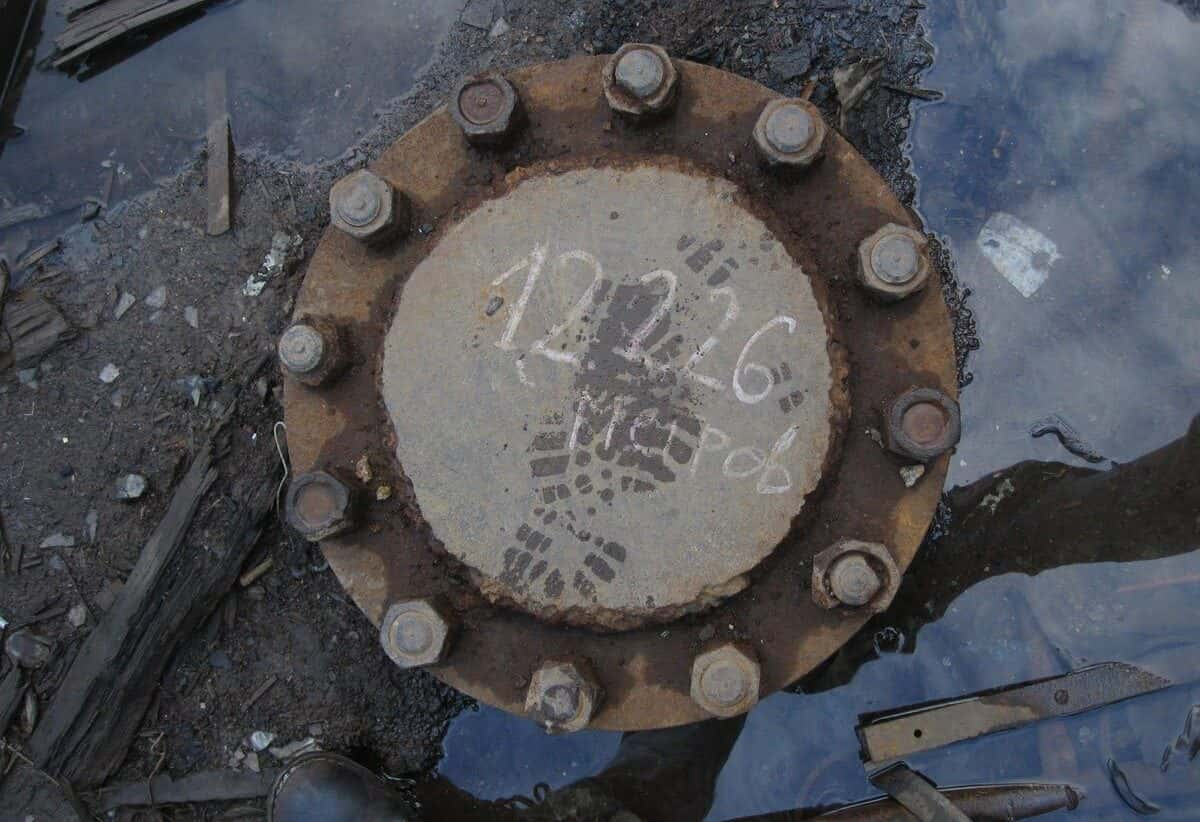
Not What They Expected
It Was Different
They soon discovered that they were mistaken. On the Kola Peninsula, at the very least, this may not be the situation. After learning this, a few other discoveries unfolded which led them to find something much more incredible than they thought.

It Was Different
It Was Still Granite
Researchers found granite there even at the furthermost reach of the borehole! After some time, they came to the conclusion that the seismic wave change was brought about by metamorphic differences in the rock instead of a shift to basalt.
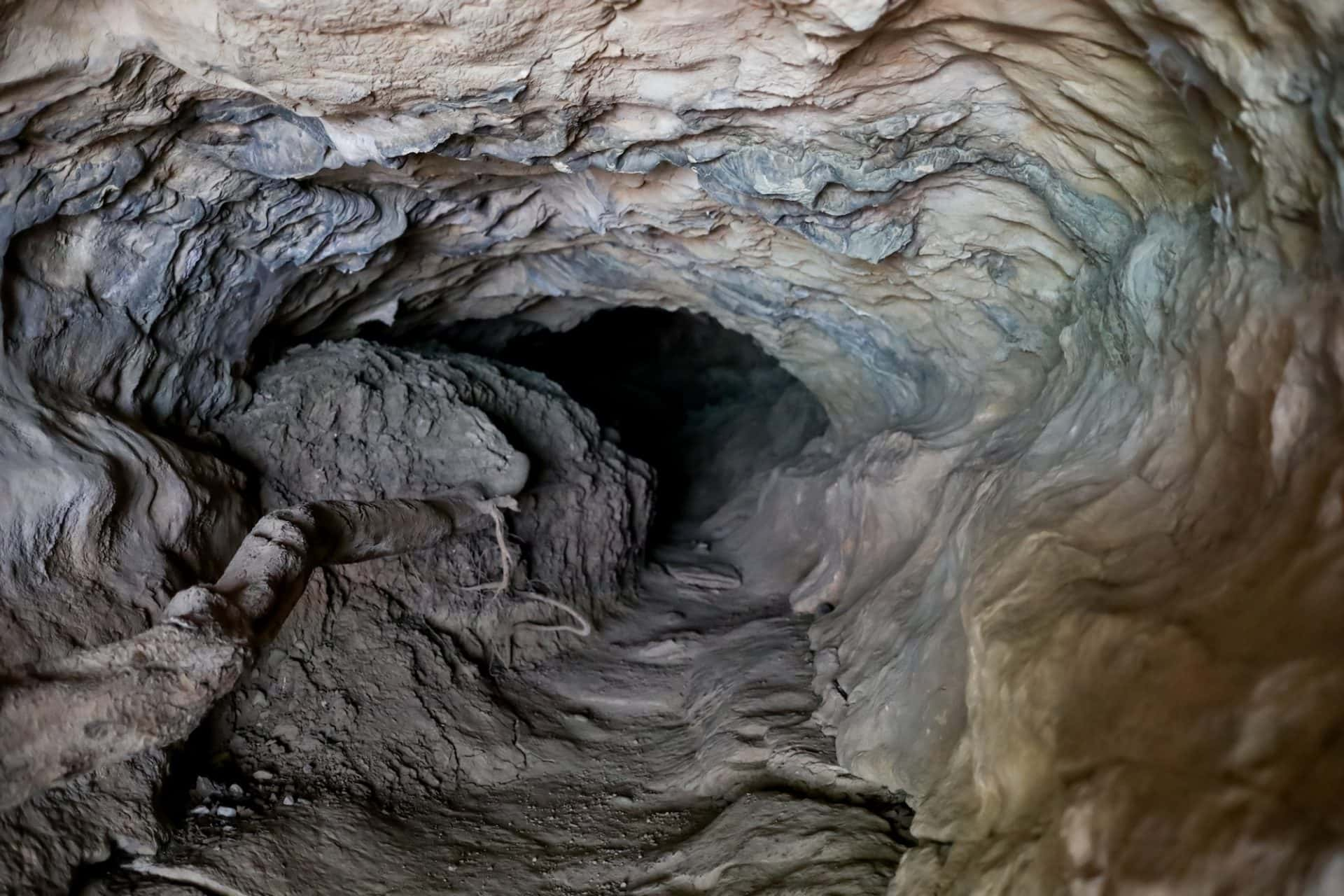
It Was Still Granite
They Found Something Incredible
This is by far not the case. They also discovered flowing water a couple of miles underneath the surface, which was spectacular. This was not what they expected to find down there!

They Found Something Incredible
Proof Of Biblical Flood
There were enthusiastic people who decided that the discovery of water below the surface was proof of biblical flood. However, the phenomenon is also believed to be caused by strong pressure forcing hydrogen and oxygen atoms out of the rock.
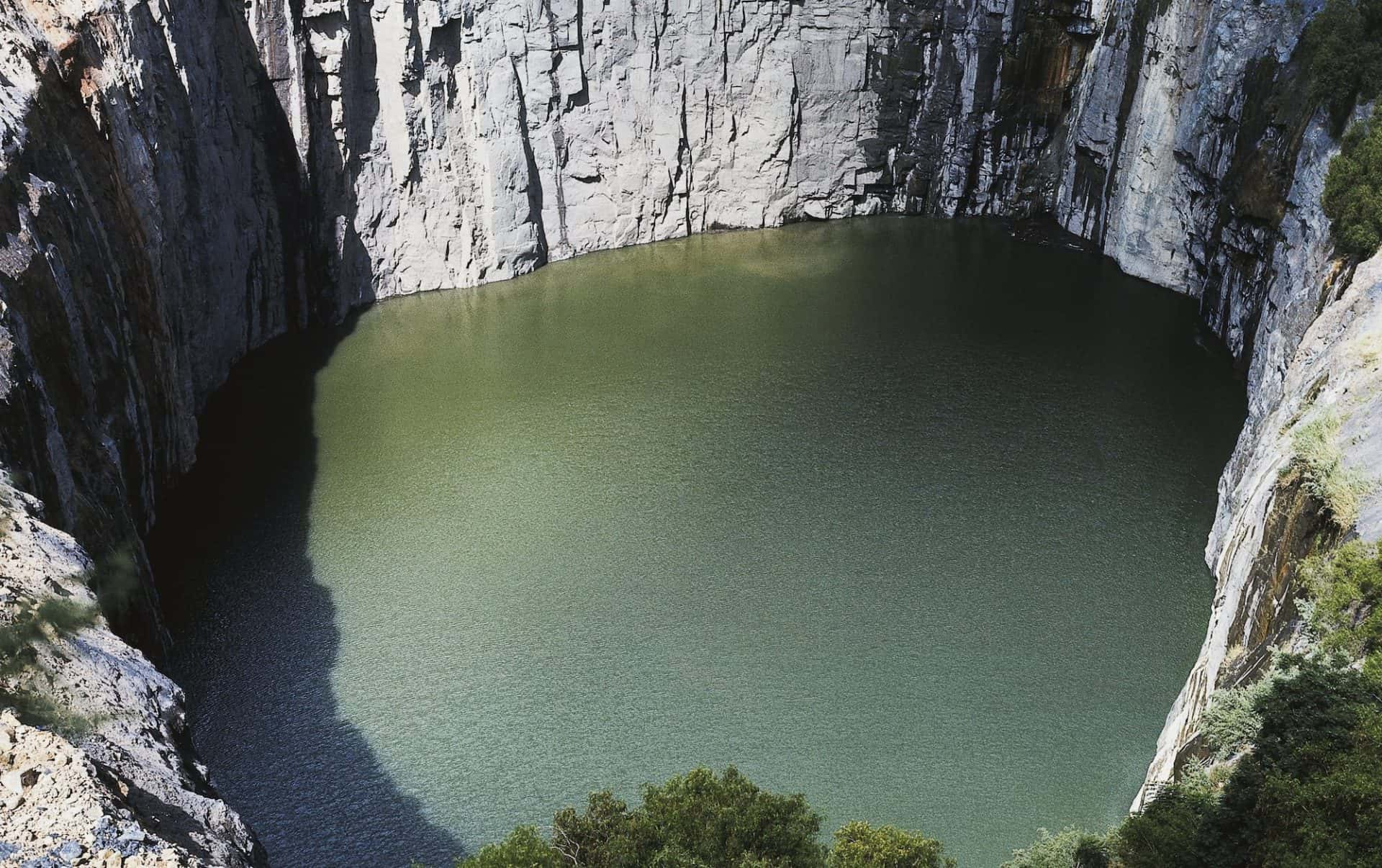
Proof Of Biblical Flood
Trapped Beneath The Surface
Afterward, impermeable rocks trapped the formation of new water beneath the earth’s surface. This was the explanation of the researchers when they found this. What do you think?

Trapped Beneath The Surface
Closure And Collapse
The timing of the closure of the Kola Superdeep Borehole coincided with the collapse of the Soviet Union. By 1995, they shut down the project on a permanent basis. At the moment, it is even considered an environmental hazard. However, it is possible for visitors to see relics from the operation in a nearby town called Zapolyarny. It is around six miles from the site. Isn’t it impressive that no one else has beaten the record? This means that the borehole is still the deepest man-made point on the planet!
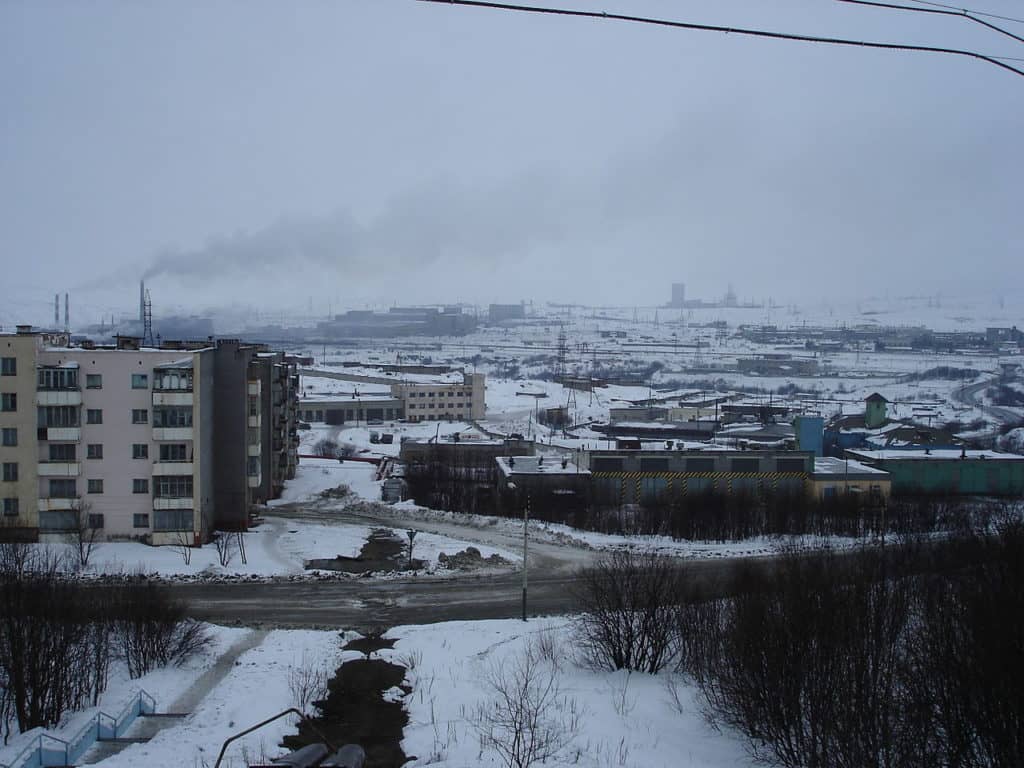
Closure And Collapse
The Race To The Center
Just so you know, the race to reach the center of the Earth is not yet over. In the oceans, there are drilling platforms from the International Ocean Discovery Program that is still exploring what lies below the seafloor. They deal with extreme temperatures and failing equipment to see what secrets it holds.
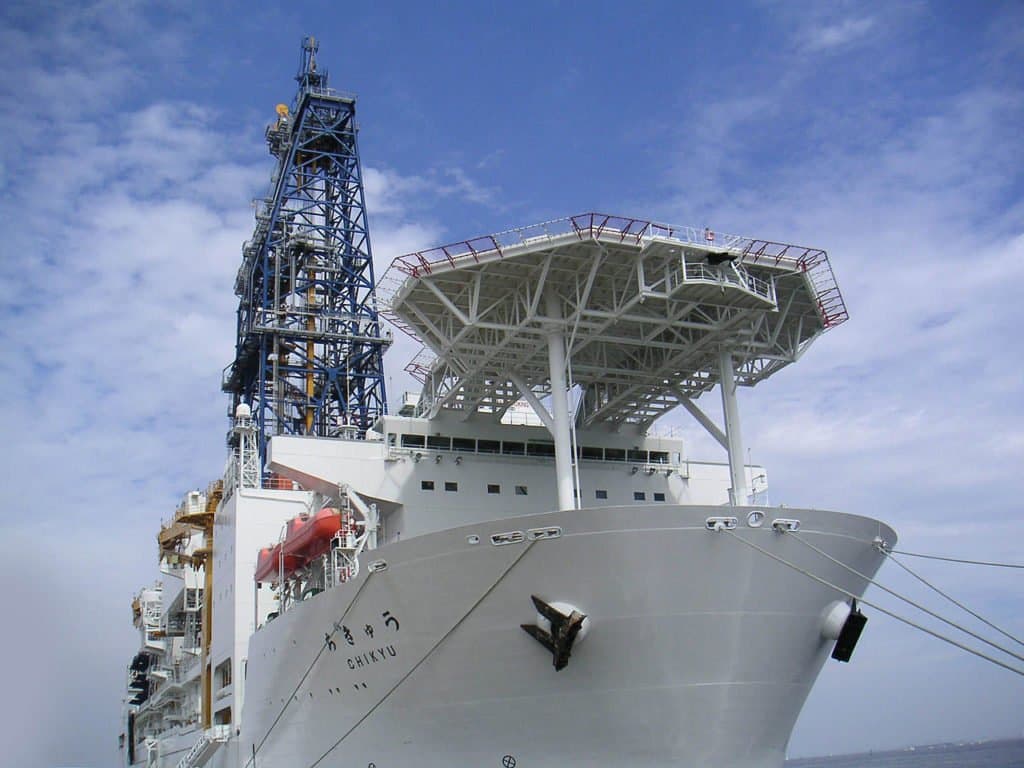
The Race To The Center
Below The Water
However, they also make trips below the water to do something aside from reaching the mantle. For one thing, a two-man submersible literally plunged into the unknown when it was dropped into the Antarctic on a discovery mission. The aim of the crew members was to go deeper under the water close to the South Pole than anyone else has ever ventured. What did they find down there? Well, let us just say that they got a glimpse of a world that no other person has ever seen in the past.
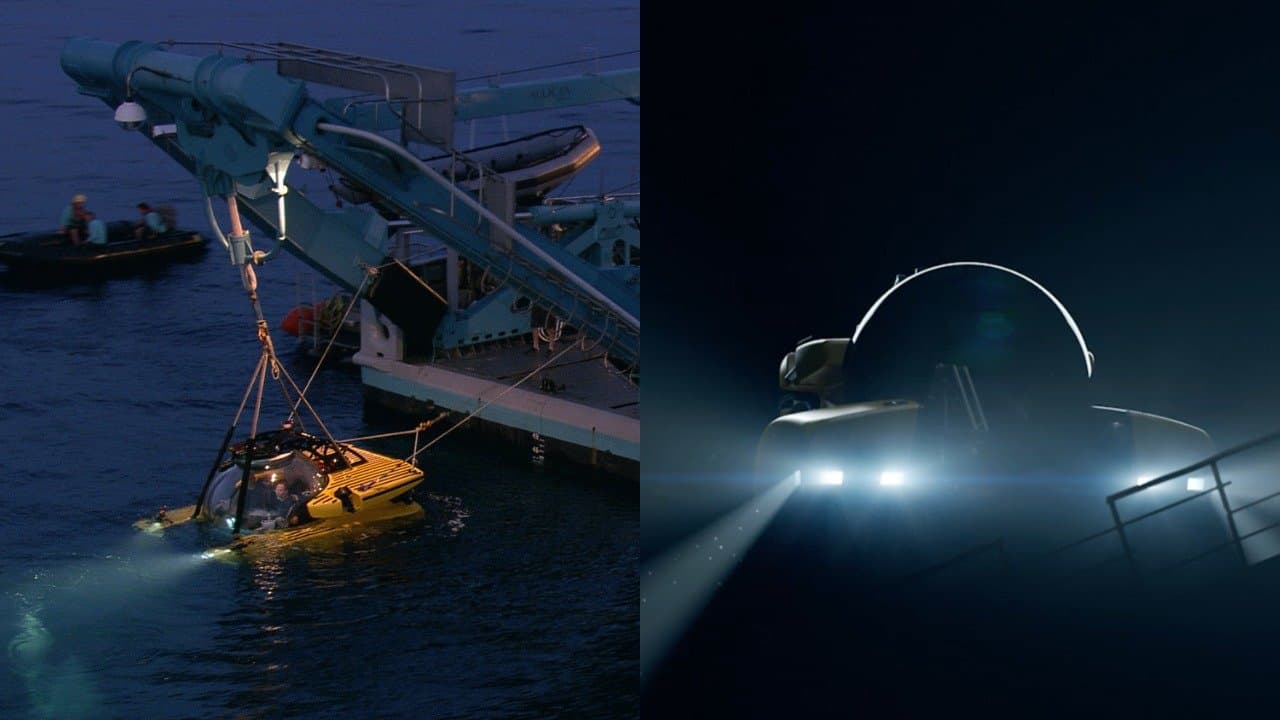
Below The Water
Years Of Careful Planning
Mind you, this was not a regular spur-of-the-moment mission either. As a matter of fact, they spent two years figuring out the right time and place for the dive. There is a good reason for the wait. The truth is that we really do know more about the skies than we do about the ocean floor of our own planet.
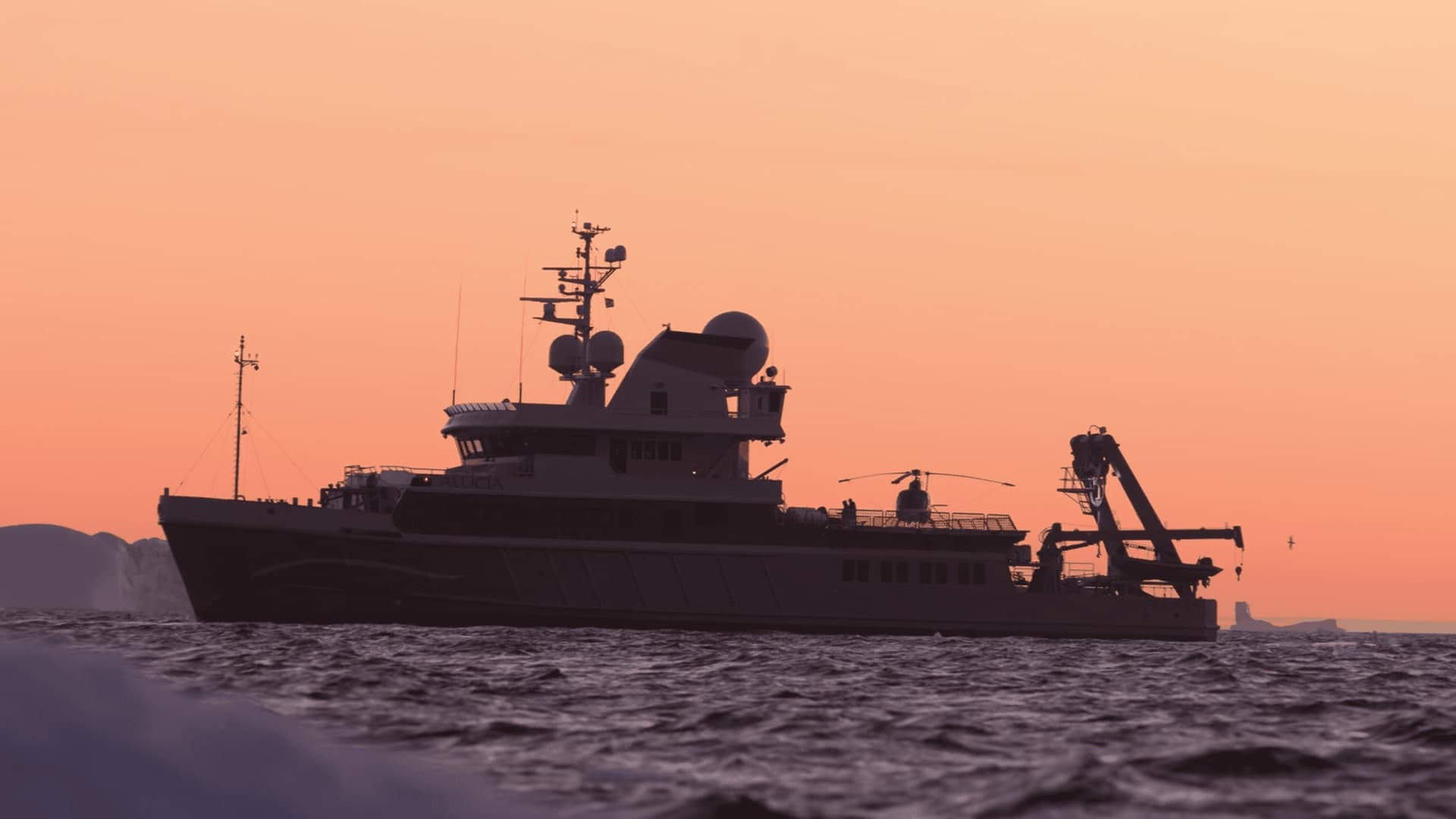
Years Of Careful Planning
We Know Little About It
We have been able to learn more about the surface of Mars than the floors of the oceans around us. Allow us to put things into perspective. The distance between Earth and our neighboring planet is 140 million miles. On the other hand, the average depth of the ocean is only more than 12,000 feet or approximately two miles!
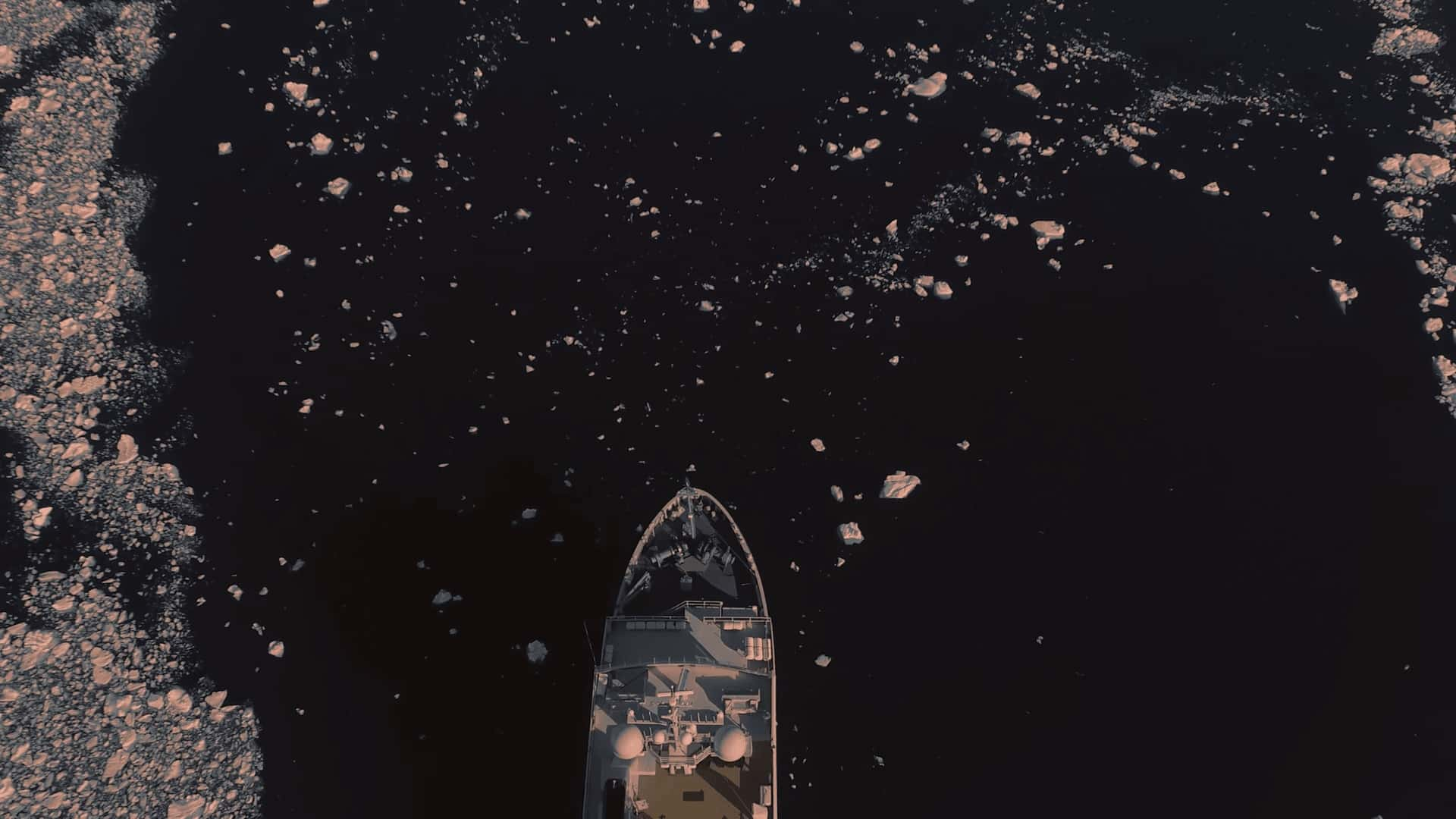
We Know Little About It
Not Easy At All
You are wrong if you thought that the dive below the Antarctic was easy. For one thing, scientists had to figure out where to make the descent. In the end, they decided to go with a location known as “Iceberg Alley.” The place did not receive its name for no good reason.
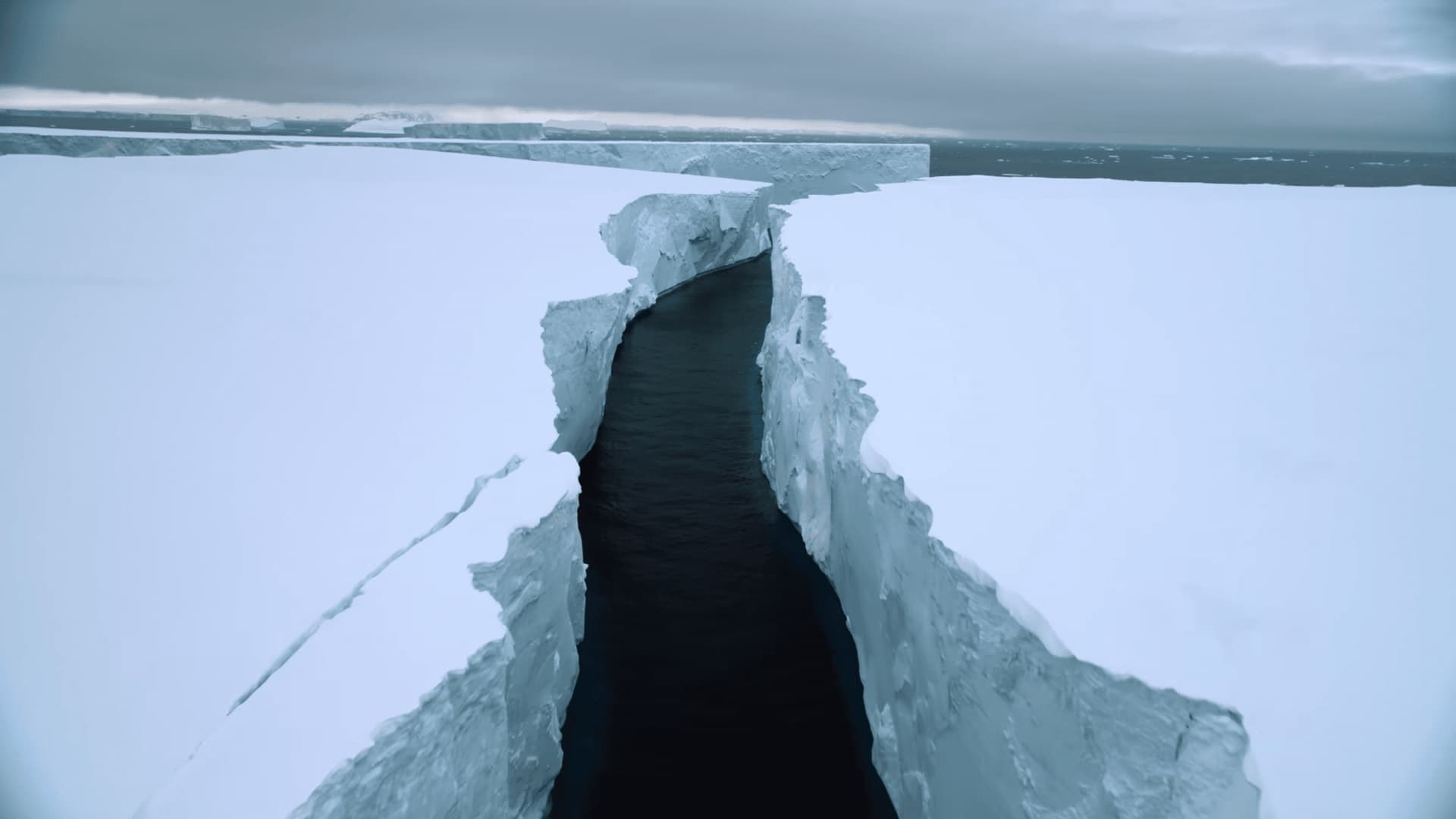
Not Easy At All
In The Antarctic
The alley forms a channel close to one of the northernmost points in the Antarctic Peninsula. The stretch of the sea is surrounded by shifting ice chunks. There are pieces about as big as a motor vehicle, but others are half a square mile big. It was a huge challenge to simply get the boat with the submersible there.
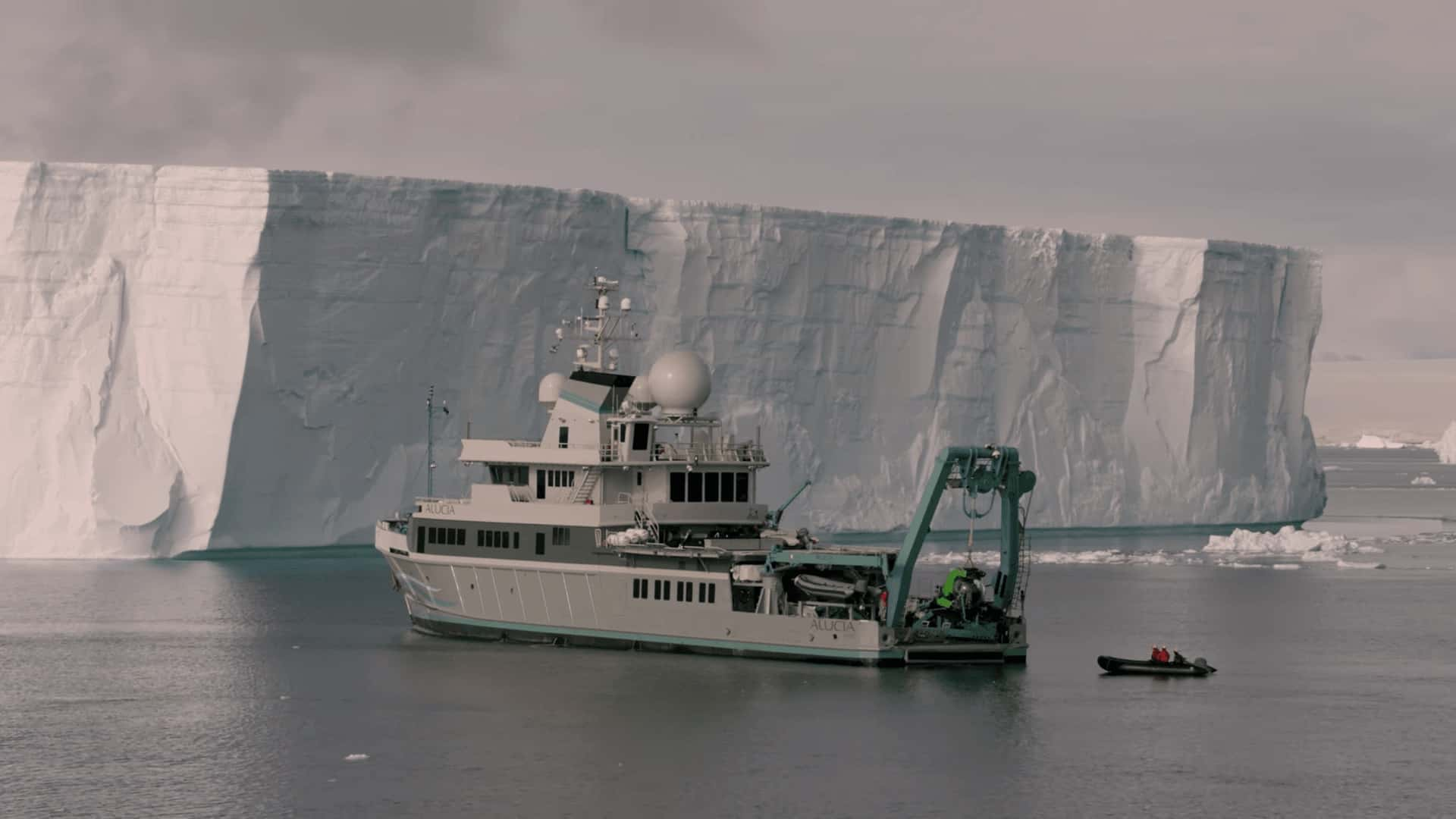
In The Antarctic
Diving Into The Unknown
The crew was on a quest to dive into the unknown. You can learn more about it in a documentary! James Honeyborne, the executive producer, said that they found setbacks along the way. He even told the BBC that reaching Iceberg Alley was like “a giant game of Space Invaders.” It was not only reaching the right position that made things difficult for them. There were also other factors that got in their way.

Diving Into The Unknown
So Many Unknowns
For one, the team was not certain how their submarines would perform down there. The depth was going to put a lot of strain on it, after all. However, these concerns died out once they started to make their descent. Underneath the waves, they found an incredible ecosystem of amazing creatures. The team even found one that they named after an important part of the Stars Wars saga!
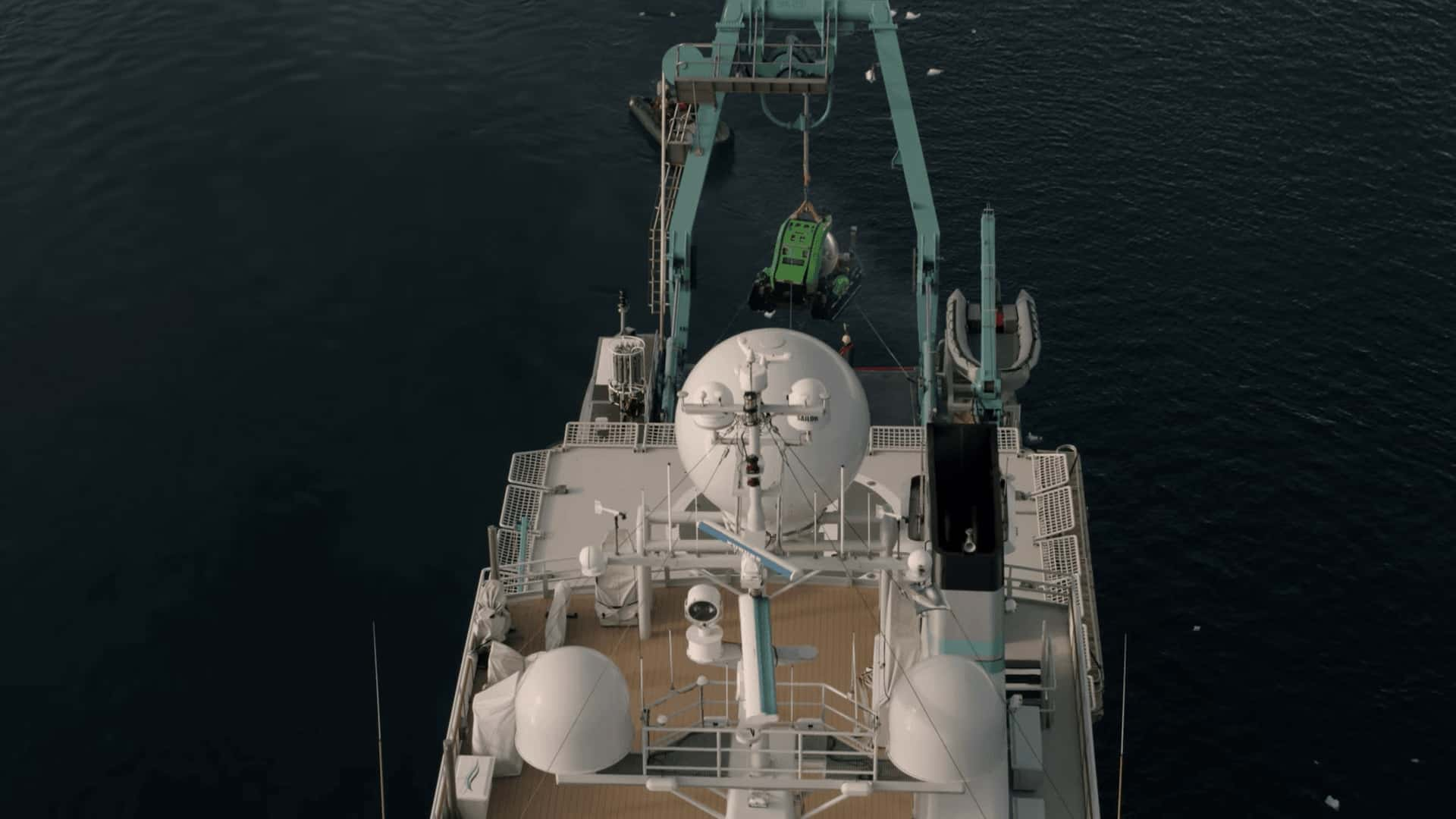
So Many Unknowns
More Life There
Even though life above the waves tends to be harsh, there is an abundance of strange and otherworldly sea creatures below all that. “Within a square yard there is more life in the deep of the Antarctic than there is in the reefs of the Barrier Reef of Australia,” Mark Taylor shared with LADbible. He was a member of the dive team in question. It turns out that there are several good reasons for this.

More Life There
Thick Marine Snow
For one thing, the marine snow that they found beneath the waves of the Antarctic was “thicker than [he’s] seen it anywhere else in the world’s oceans.” These are the words of Dr. Jon Copley from the University of Southampton. But what exactly is marine snow? And why is it important to the seafloor?
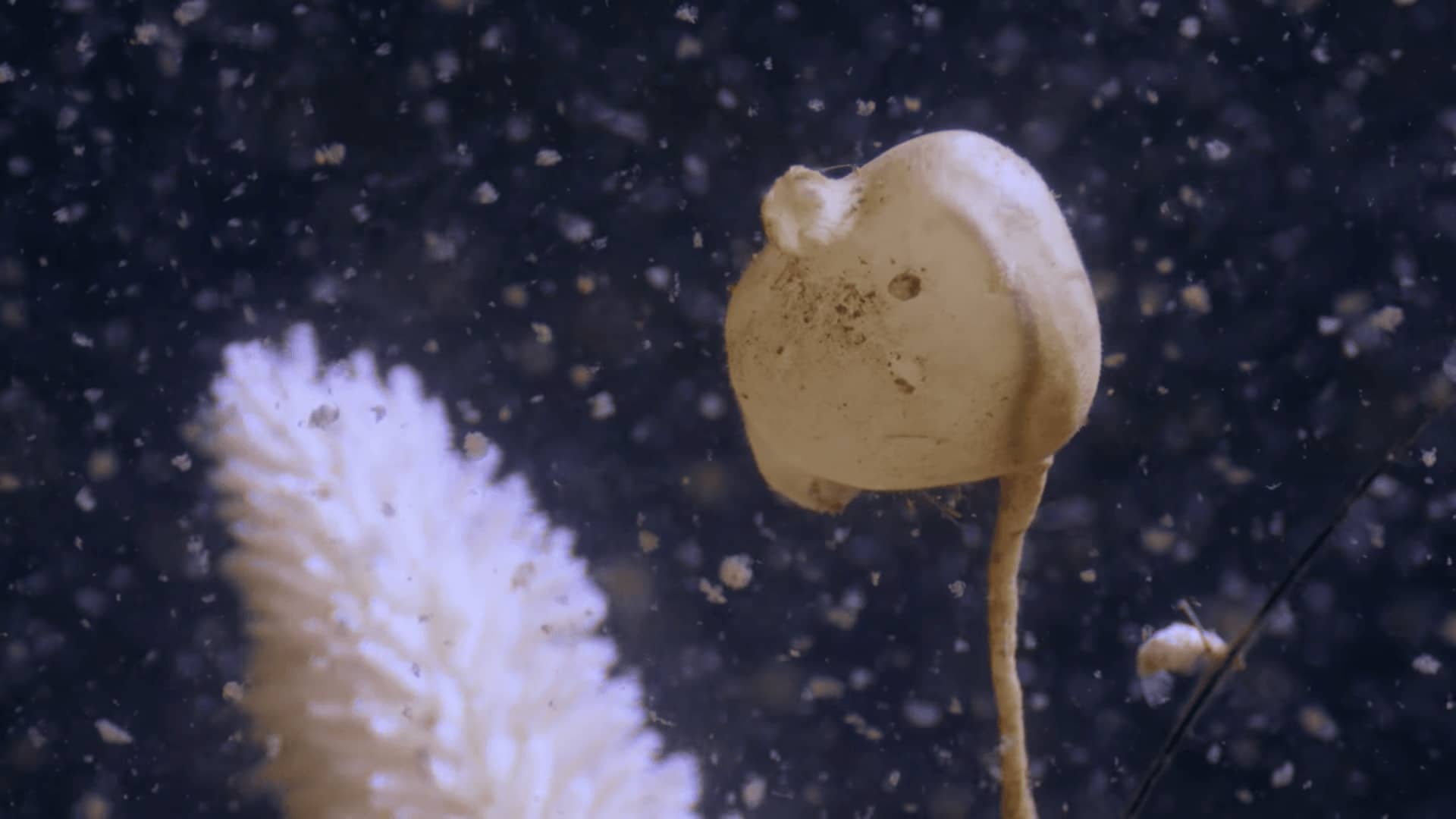
Thick Marine Snow
Important Food Source
Is this the first time you have heard of marine snow? It is organic material that flows down to the floor from the upper part of the ocean. It is a very important source of food for the creatures living in the deep. After all, it transfers energy and nutrients from the parts of the sea with sunlight.
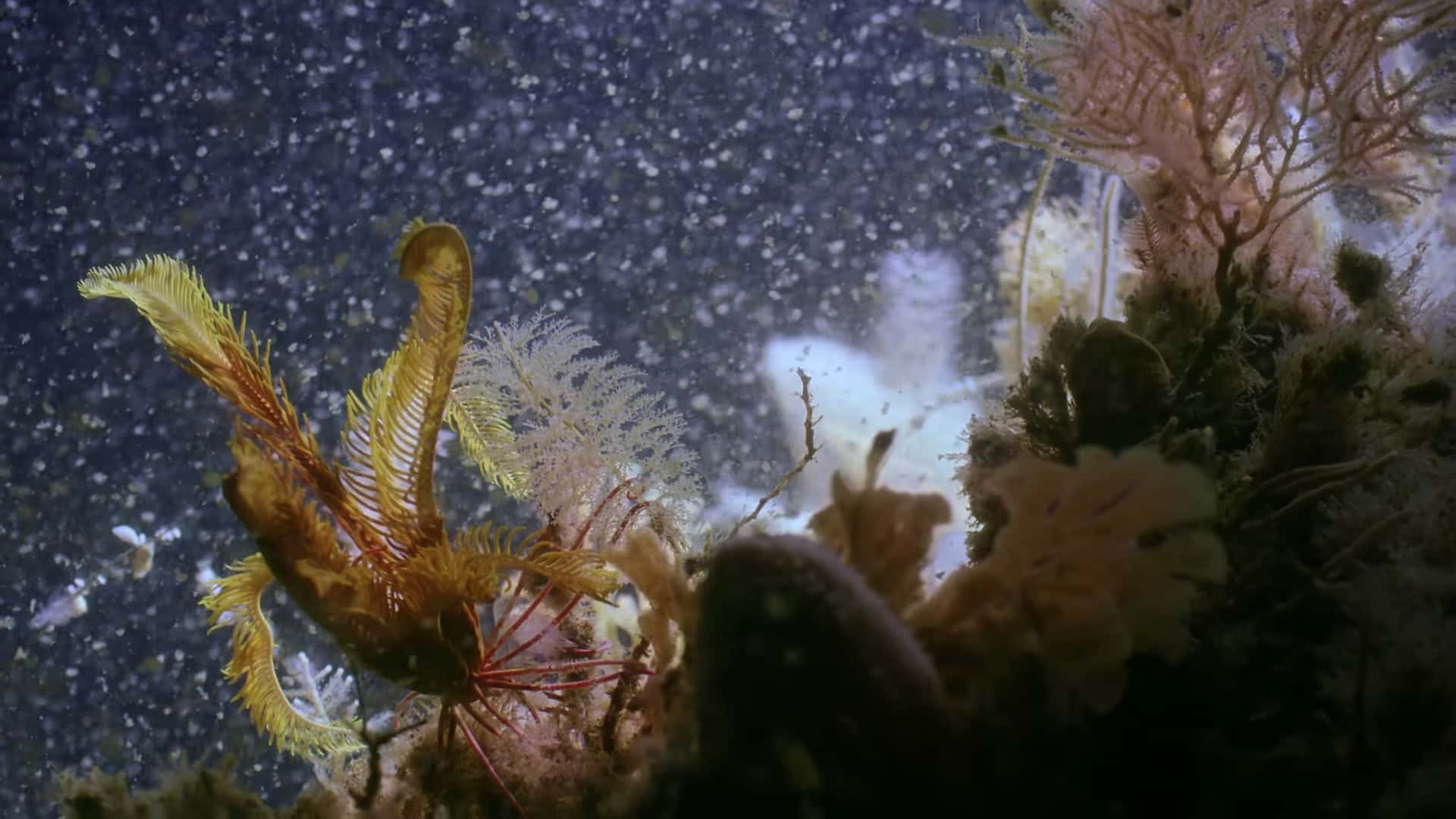
Important Food Source
Krill Poo Too
But there is one more important food source that deep in the Antarctic Ocean. We are referring to krill poo! Krill are small crustaceans that live across the oceans and play a huge role. To be specific, their excrement makes the sea floor a muddy habitat ideal for supporting life at that depth. It so happens that the animals thriving in the area are some of the most bizarre creatures you will ever lay your eyes on.
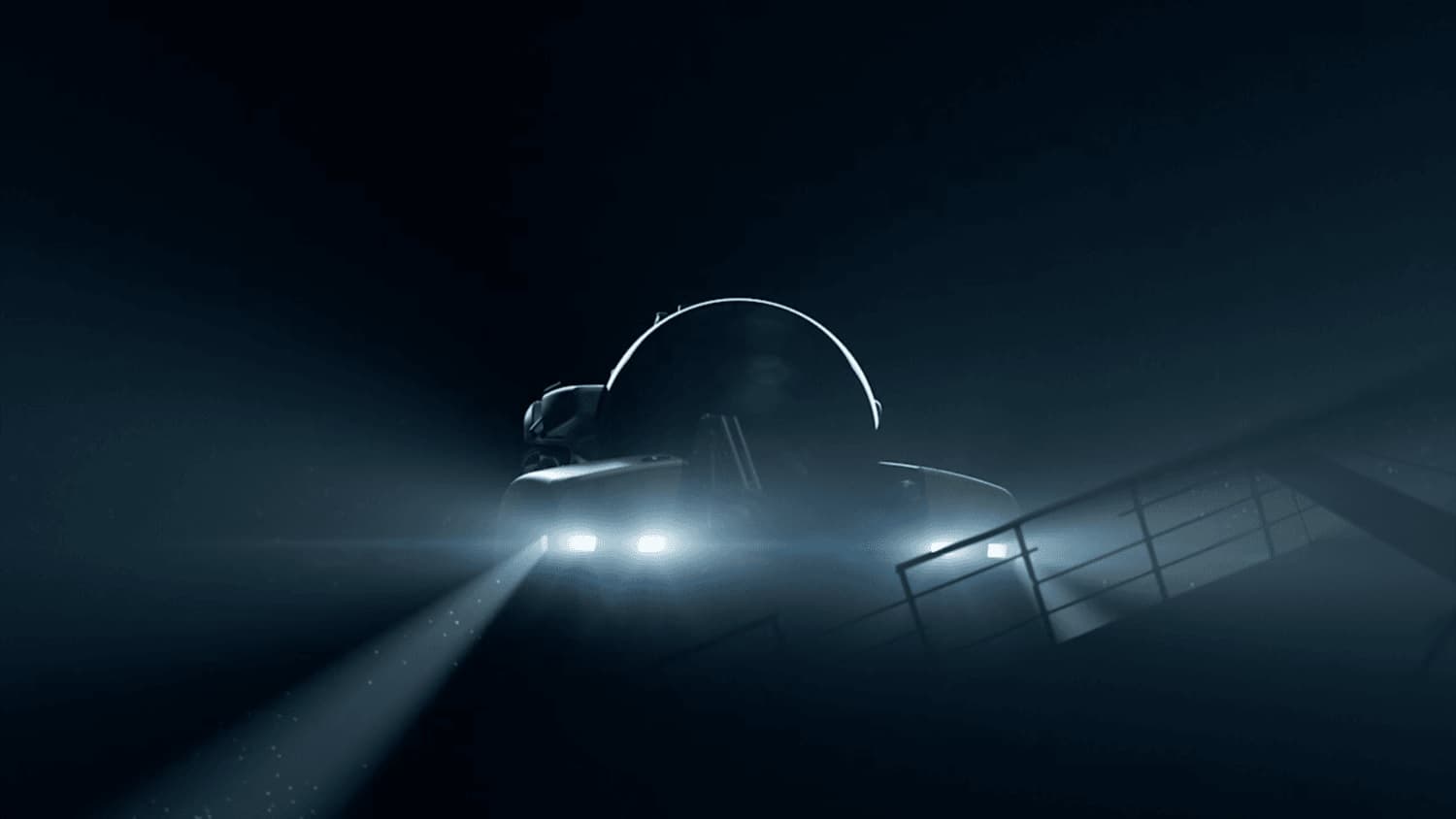
Krill Poo Too
The Antarctic Sunstar
The Antarctic sunstar was one of the most bizarre animals that the team found down there. The researchers, however, gave it a very sinister name. They called it a Death Star, and we can totally see why they decided to do that. The animal is officially called Labidiaster annulatus. It is a cousin of the common starfish, but it is a much stranger creature than its regular relative.
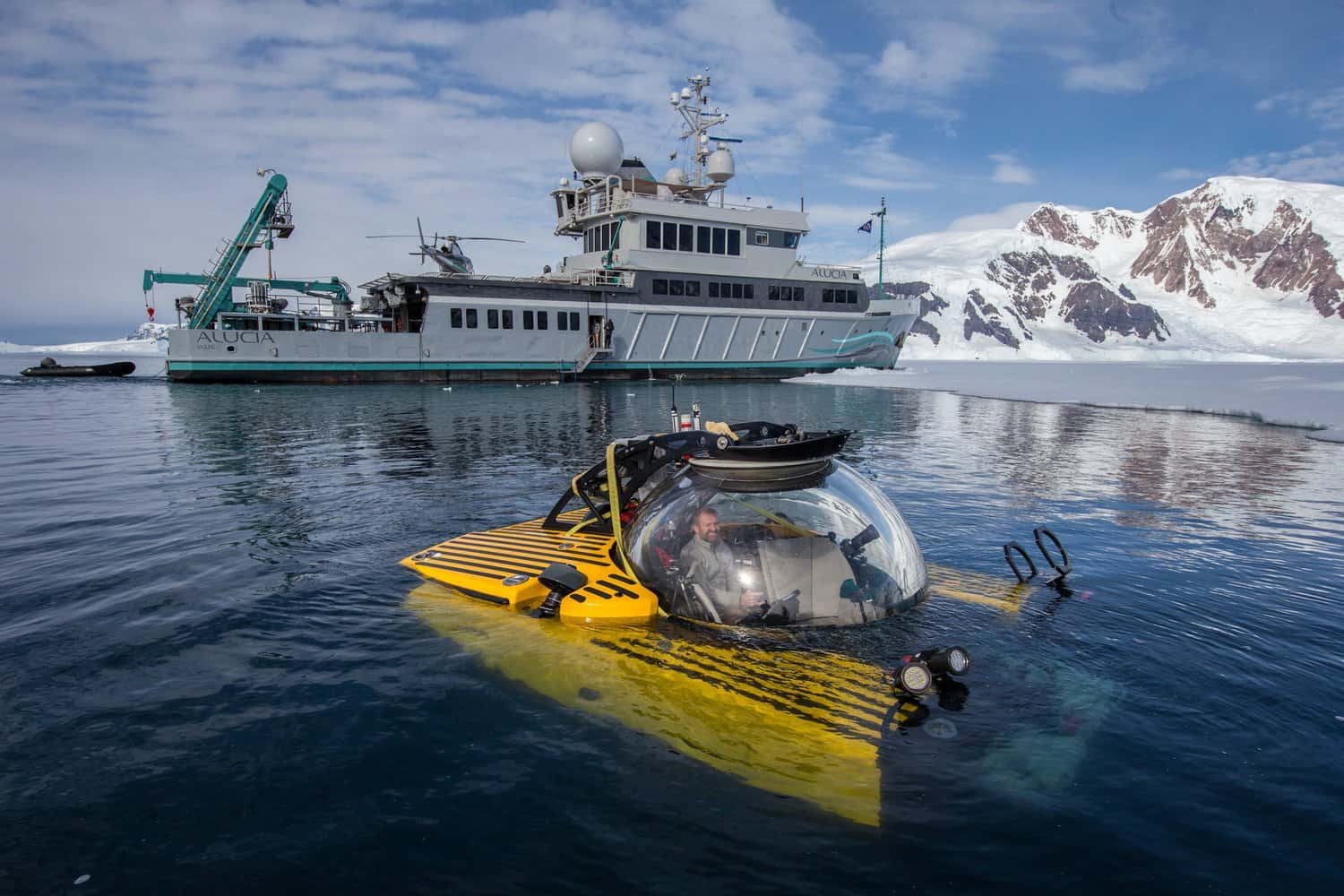
The Antarctic Sunstar
Also Known As The Death Star
For one, the Death Star can have up to 50 arms! It can also grow larger than a hubcap. The skin on the arms is covered with tiny pincers that close shut if anything makes contact with it. Most of the time, the poor victim is a krill passing by it. This is not the only weird thing about the sunstar either!
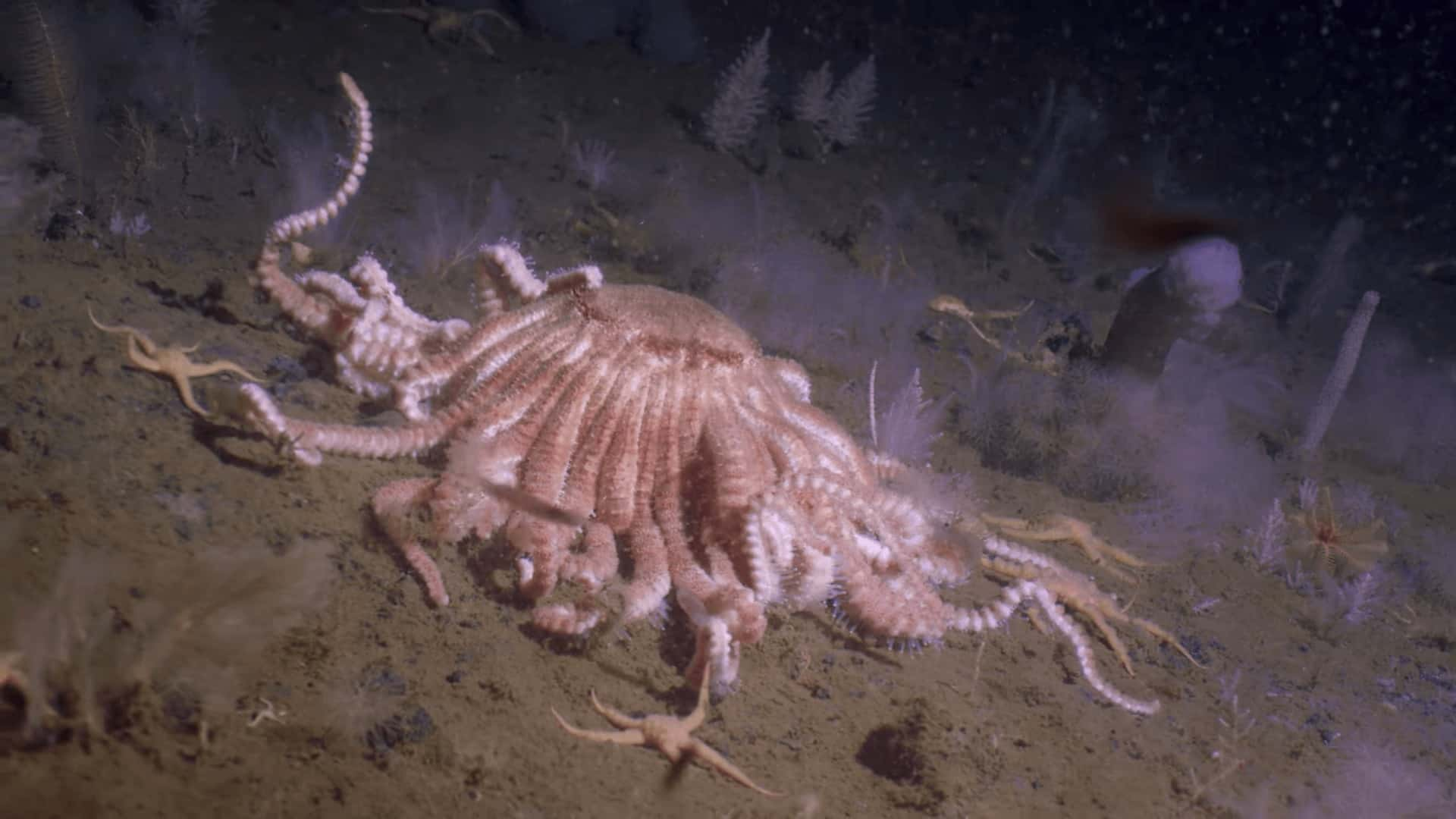
Also Known As The Death Star
How It Is Done
Fish are the dominant predators in the other oceans of the world, but the Death Star is here to show us how things are done in Antarctica. The water in the area is very cold, so fish do not often survive in the region. And so, invertebrates like the Antarctic sunstar happen to be at the top of the food chain.
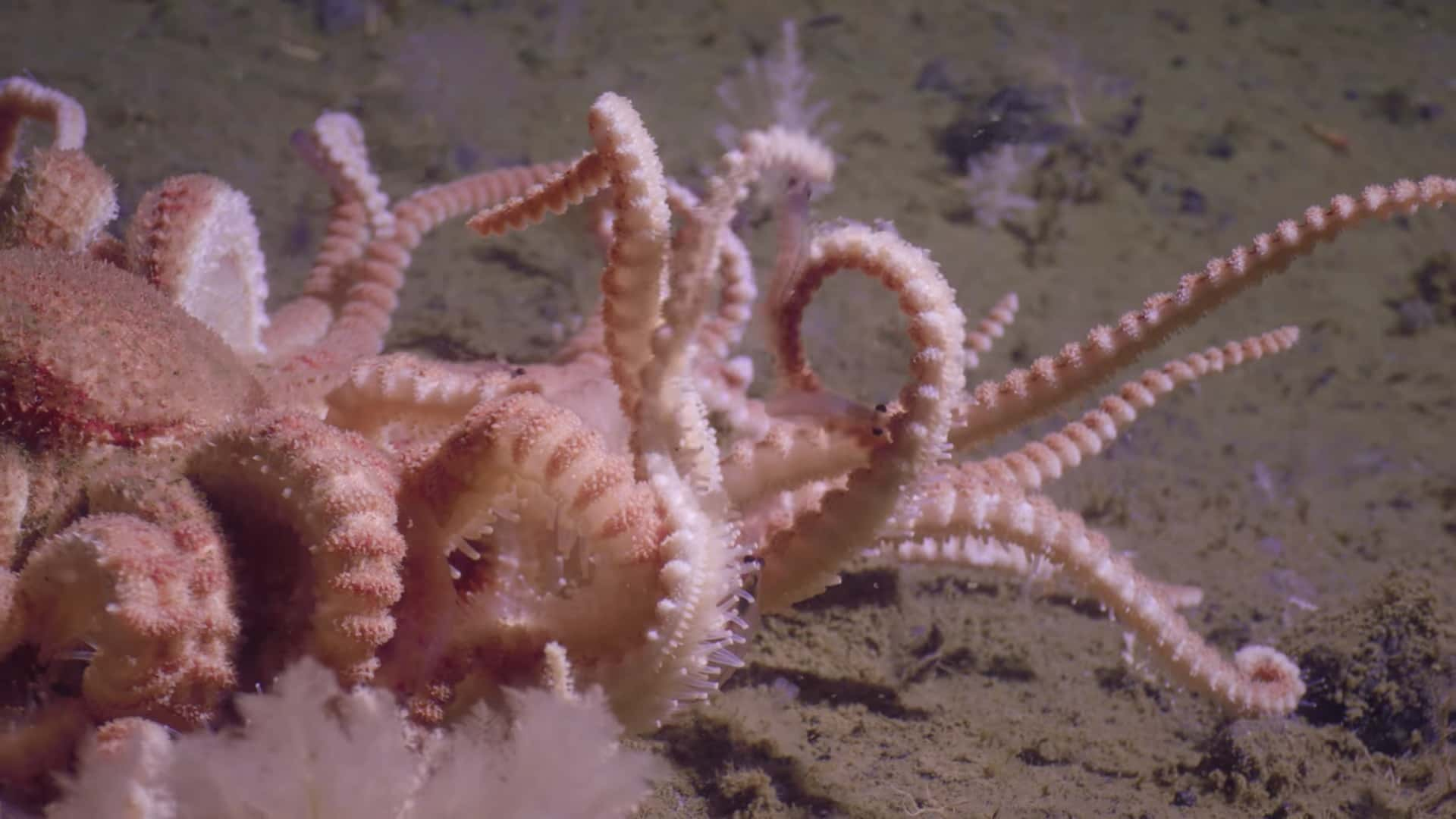
How It Is Done
Diving Down There
When you dive in the Antarctic waters, it is like you are looking at a window into what the seas had been like before we roamed the planet. “It’s the animals without backbones that dominate and that dominate as predators,” Dr. Copley said, “And that’s how the oceans were more than 250 million years ago.”
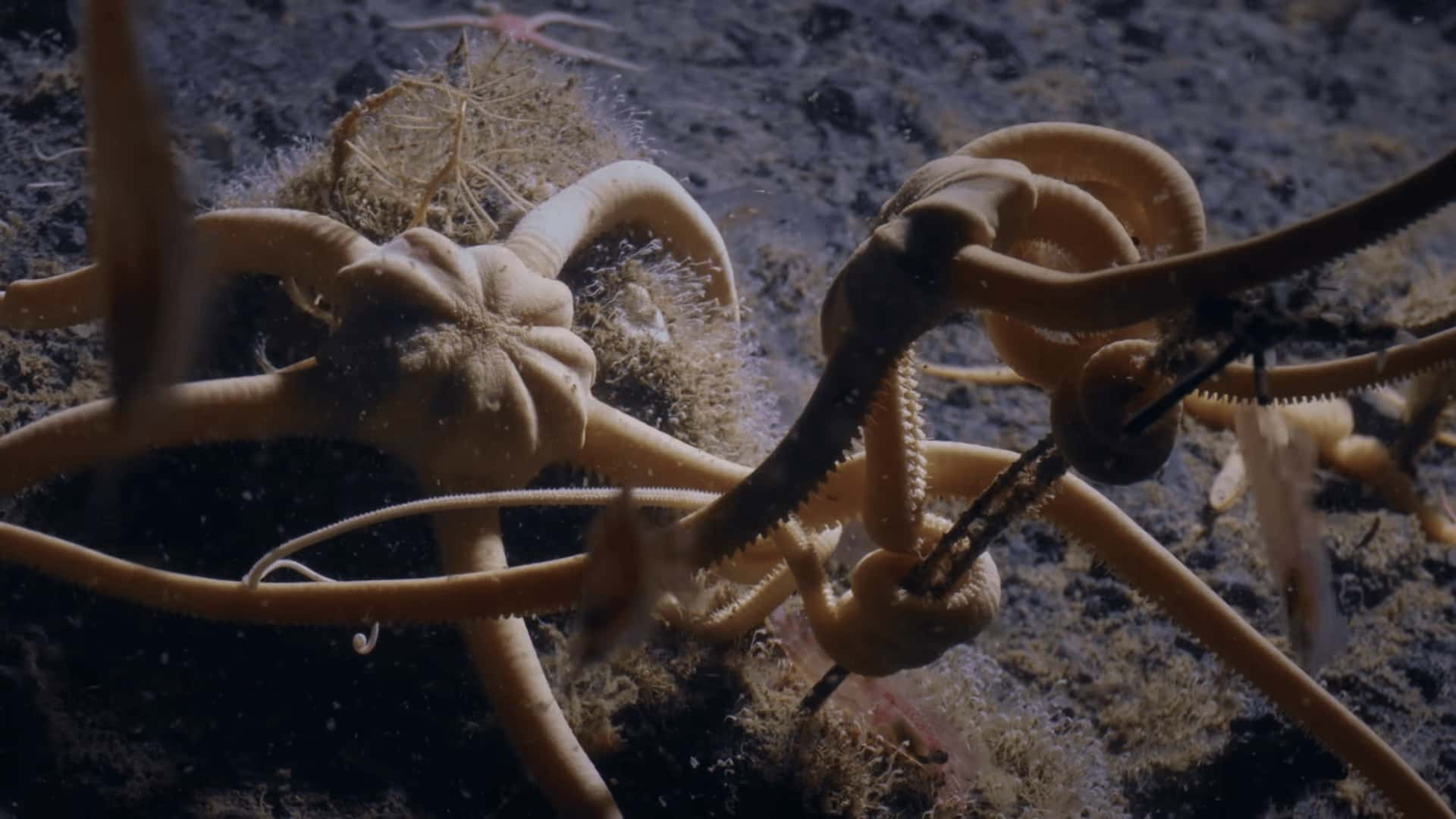
Diving Down There
The Ice Dragonfish
There is another strange animal that lives in the Antarctic Ocean. Also known as Cryodraco antarcticus, the ice dragonfish has adapted in an amazing way to survive the extreme weather conditions. Its blood has proteins that serve as antifreeze to prevent its body from freezing over. The animal also has clear blood since it does not need hemoglobin to circulate oxygen around the body like we humans do.

The Ice Dragonfish
A Deeper Understanding
Dr. Copley and the other members of the team did not only go on this mission to take in all the strange animals in the area. Despite this, it is important to have a deeper understanding of marine life in the water. By doing so, it is possible to carry out conservation efforts in the South Pole more effectively.
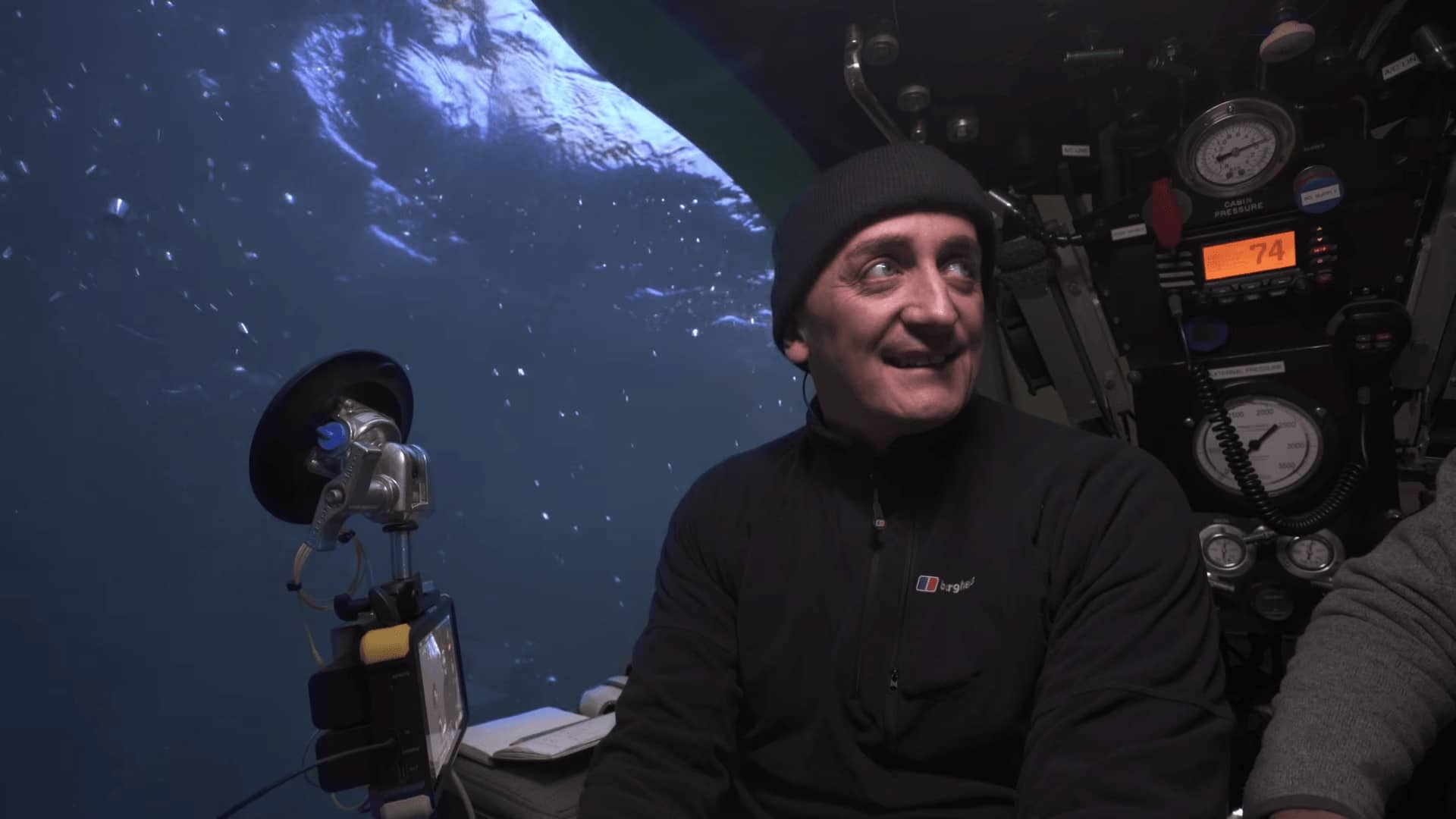
A Deeper Understanding
How Our Lives Are Connected
“On these dives, we watched the everyday lives of Antarctic deep-sea animals, helping us to understand them much better than studying specimens collected by nets or trawls from ships,” Dr. Copley shared with the BBC. He went on, “And [it’s] helping us to investigate how our own lives are connected to this remote yet fragile environment.”
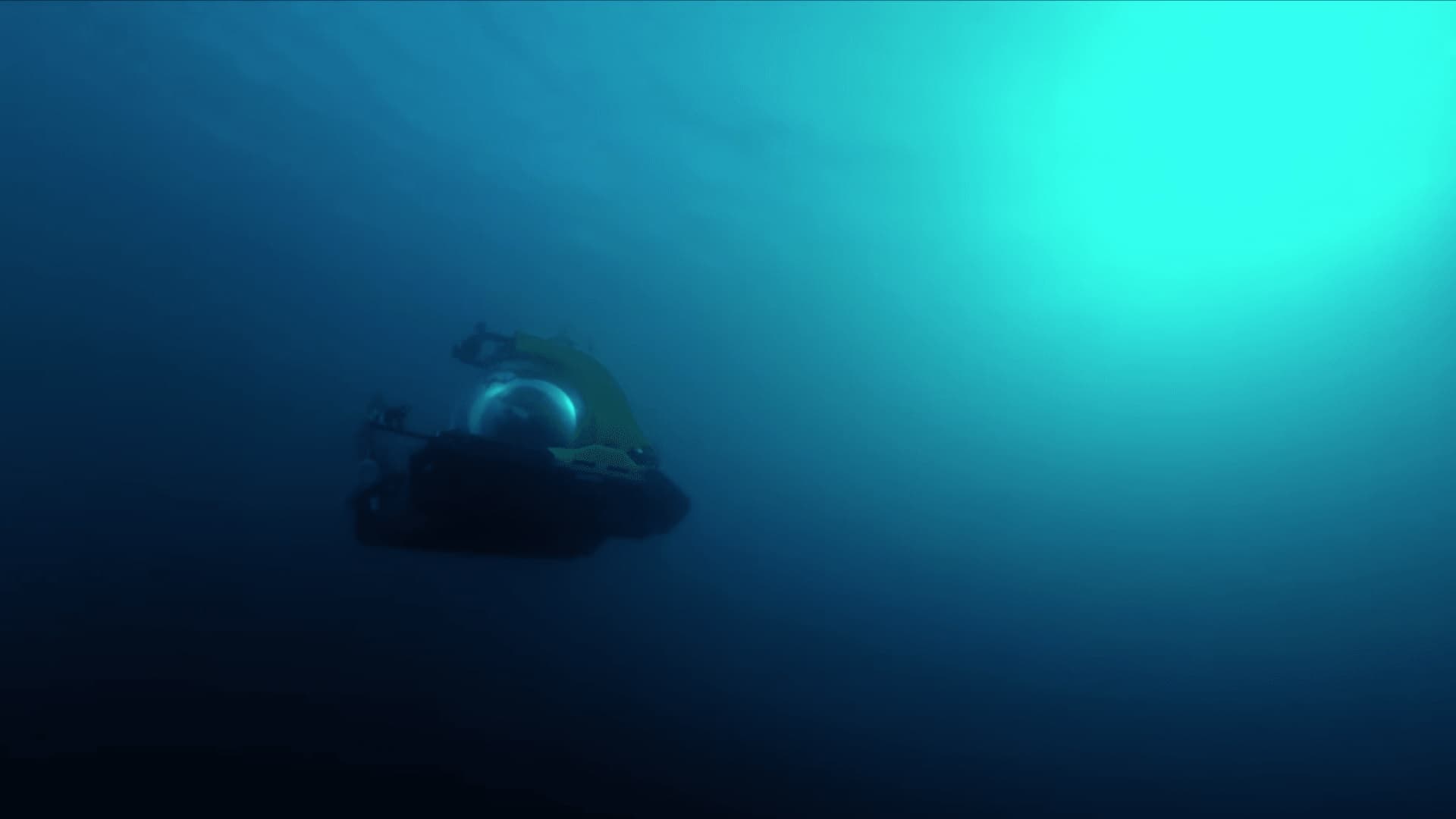
How Our Lives Are Connected
Still A Mystery
The truth is that even the most accessible areas of the oceans remain a mystery of sorts. Dr. Copley remains hopeful that the expedition will help change that to a certain extent. He explained, “Sending people a kilometer deep into the ocean around Antarctica for the first time shows that there is no longer any part of our blue planet that is inaccessible to us, if we can find the will to go there.”
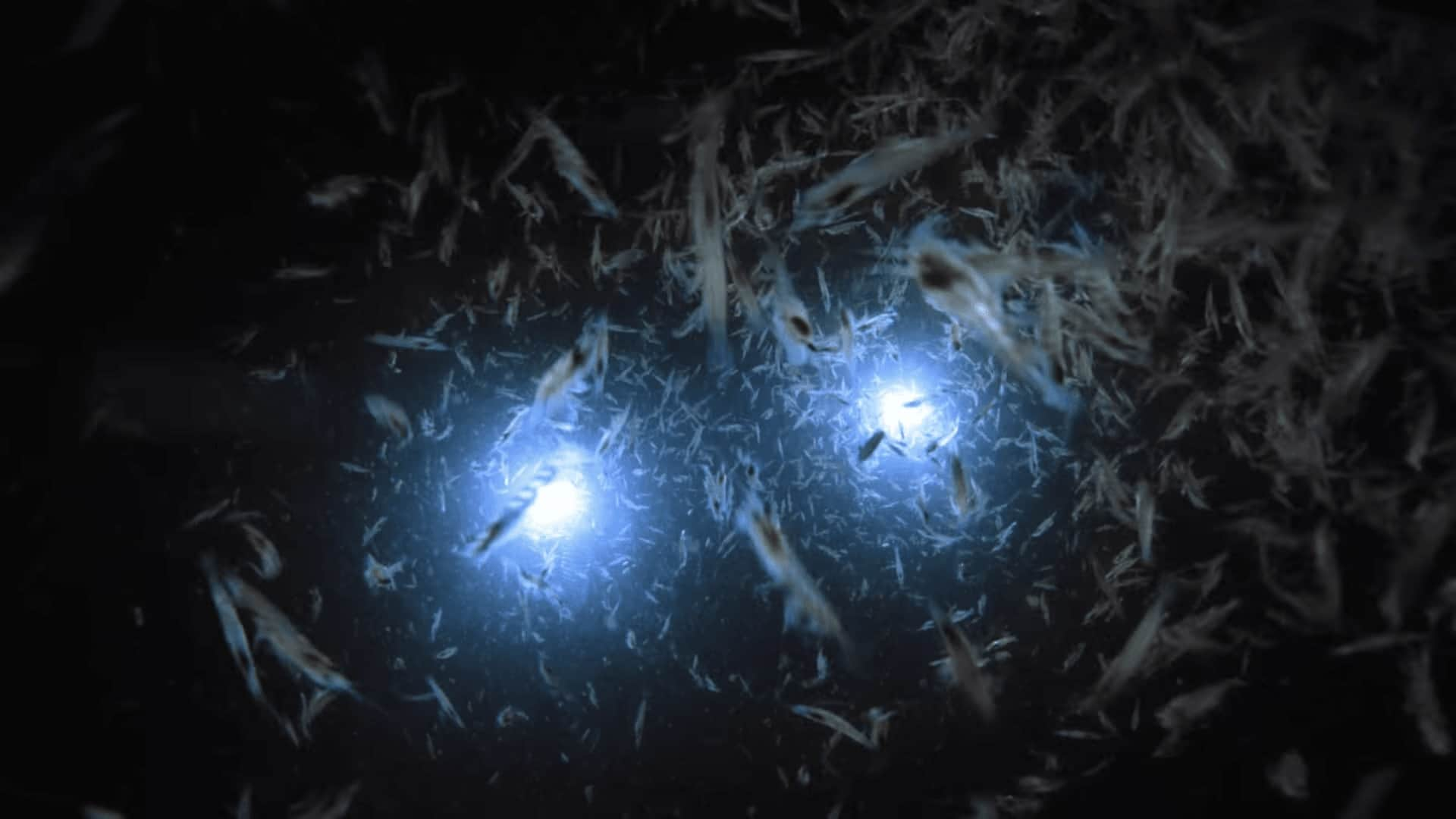
Still A Mystery
Something Even More Profound
The scientific revelations offer us a better and deeper understanding of our world. However, it has also accomplished something more profound. There is something special about reaching a place that has always been so inaccessible. “What we’re doing now is exploration in its purest sense,” Dr. Copley said. “If we all share in the exploration of our planet, then… we’ll all feel involved in its stewardship for the future.” Isn’t that a lovely sentiment? It truly feels like the marvels of the universe will never run out.
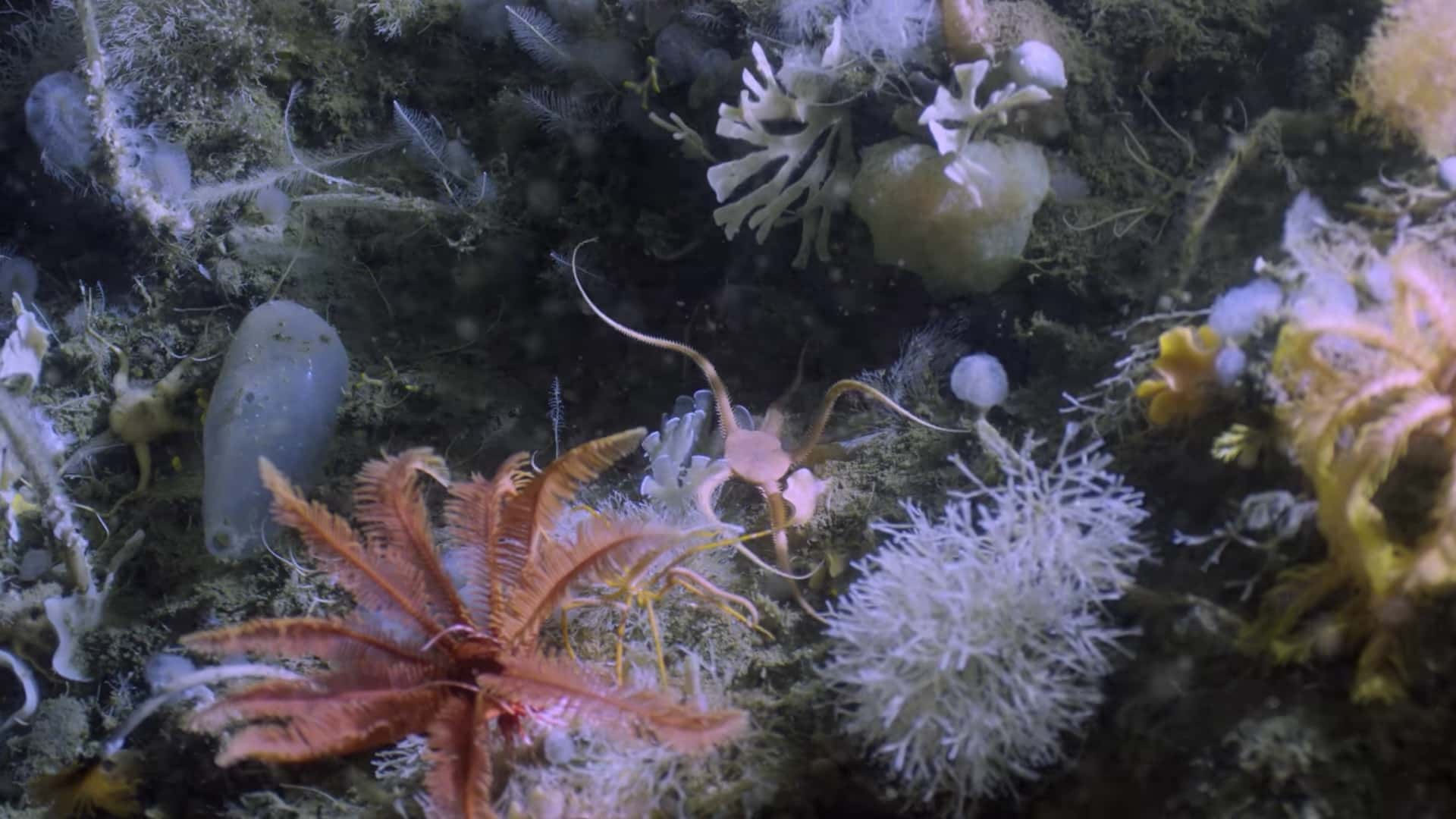
Something Even More Profound
